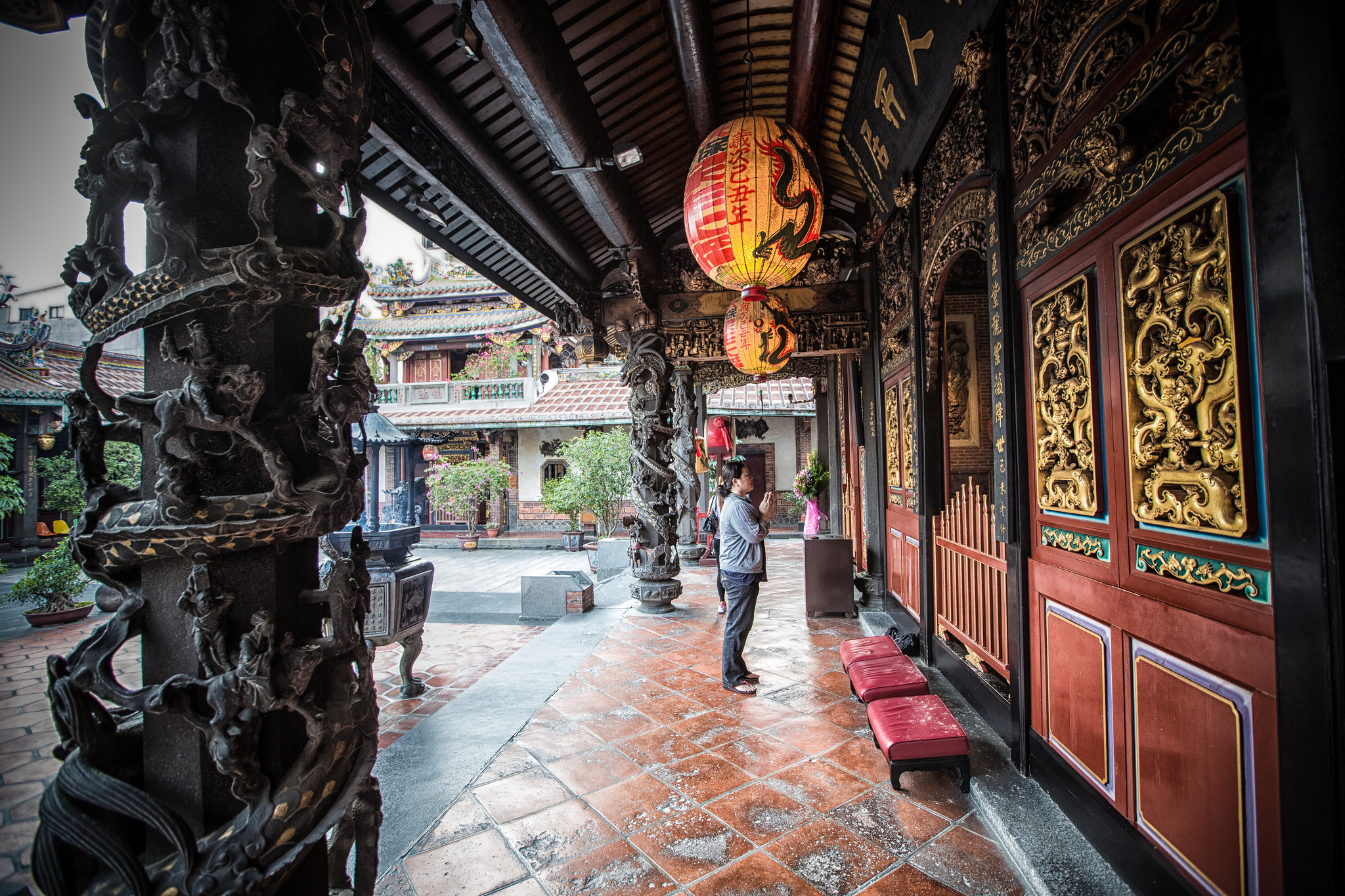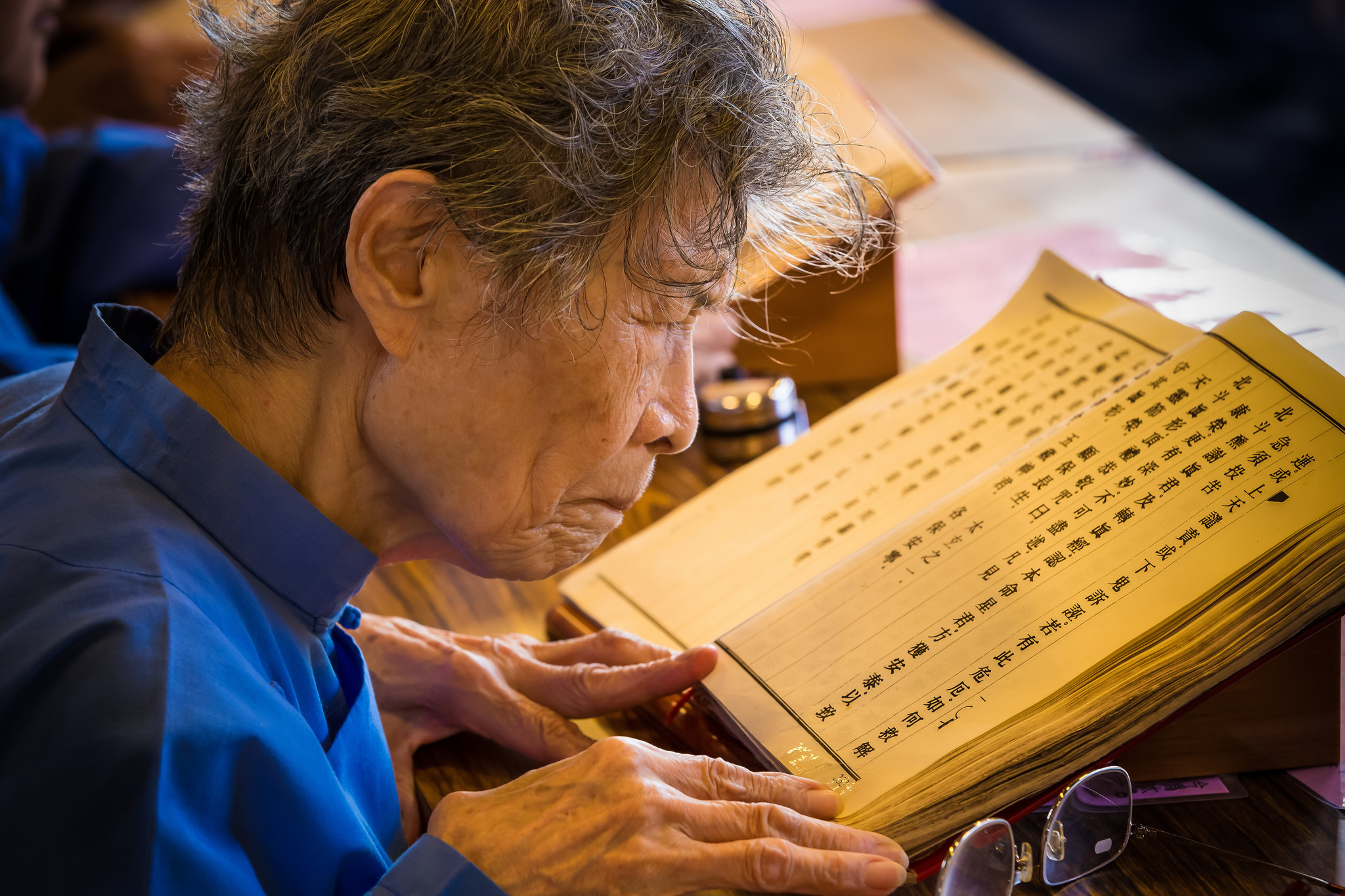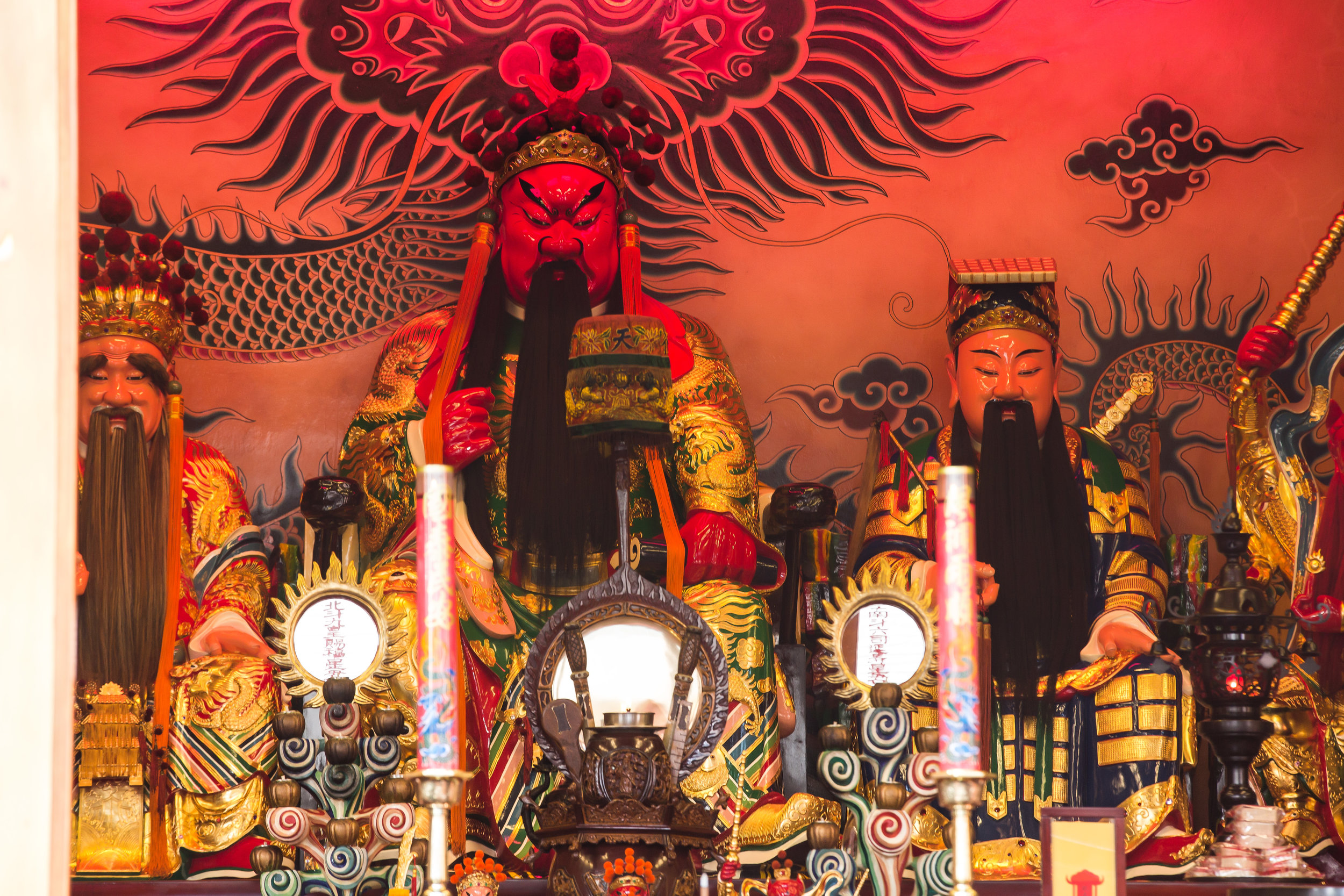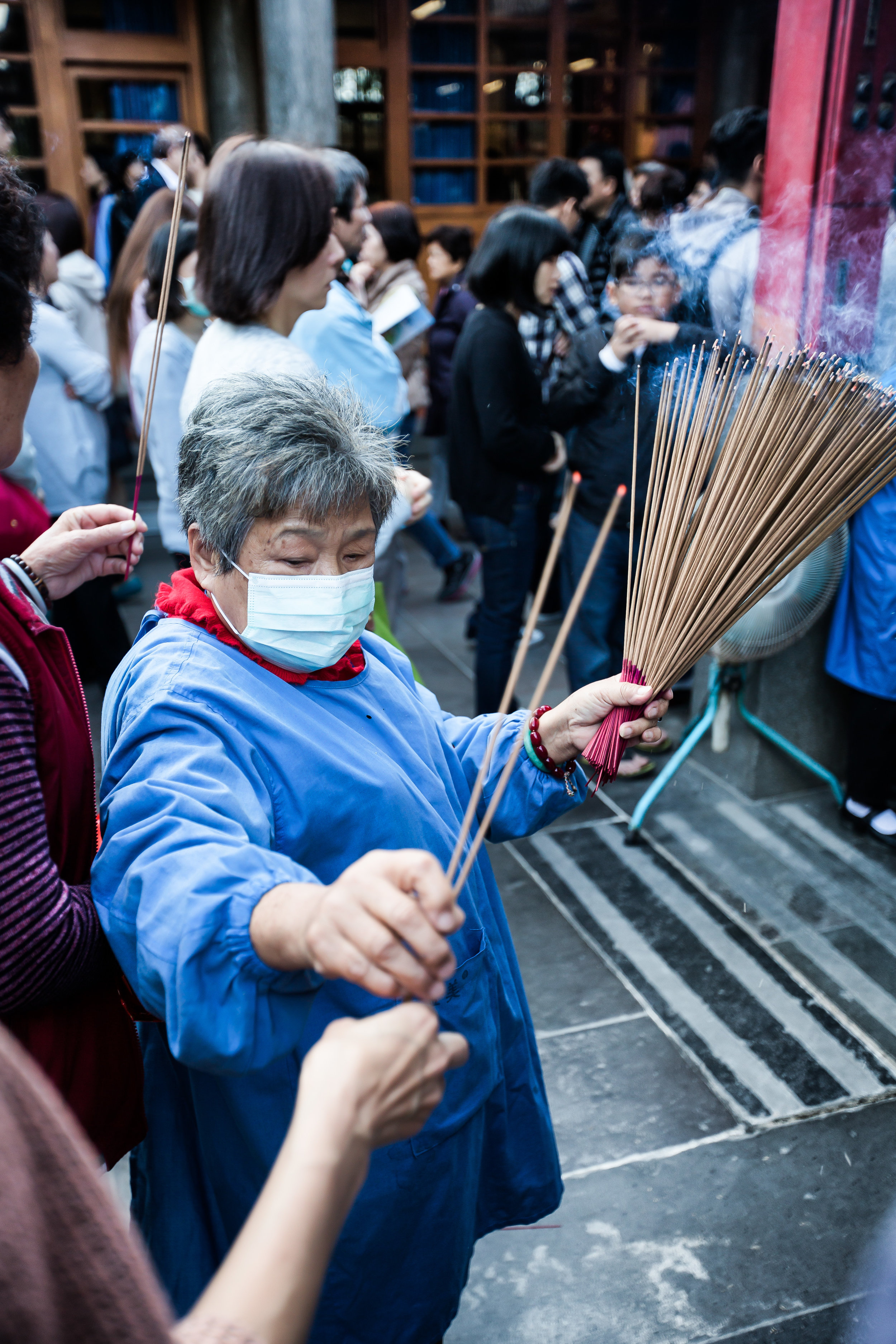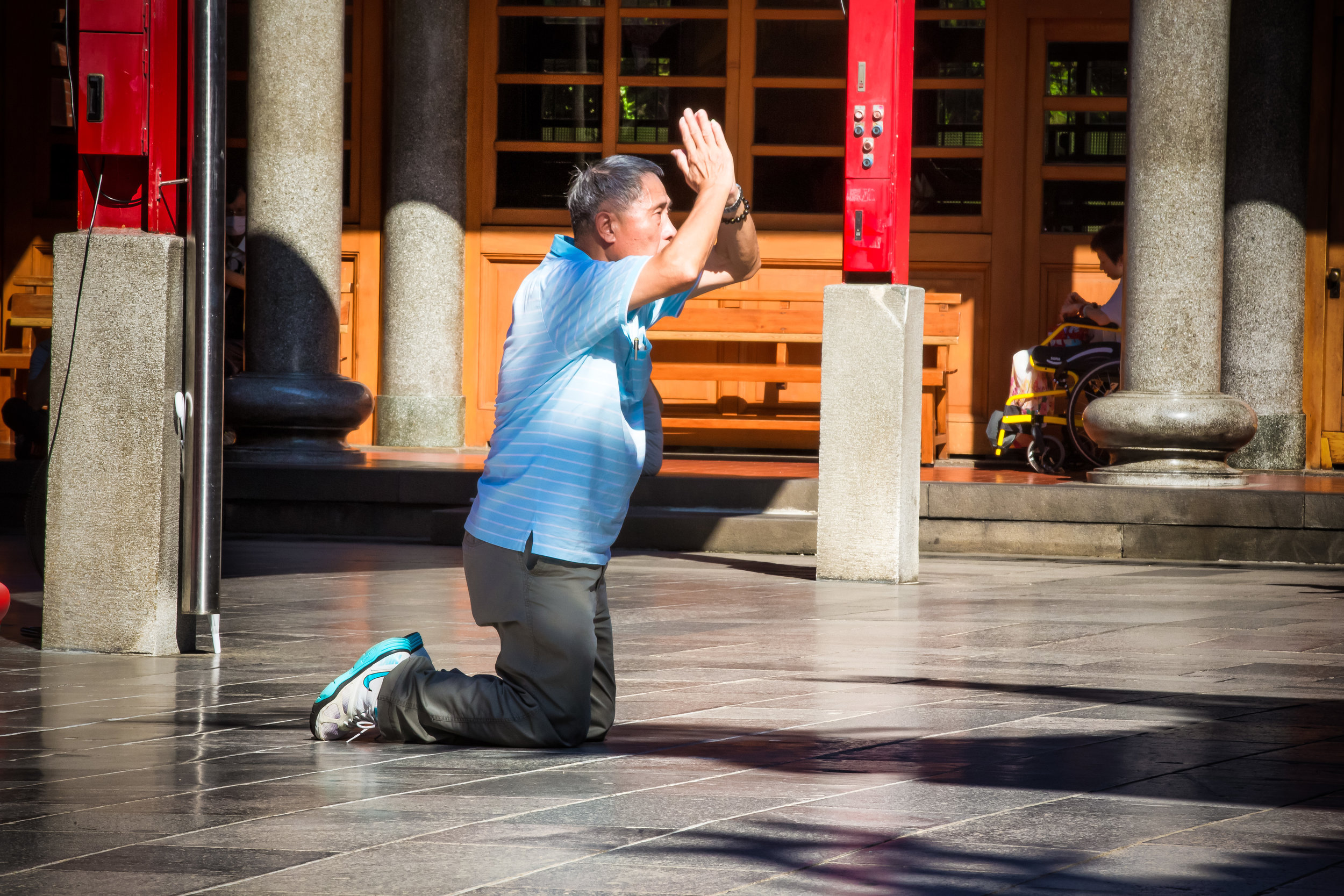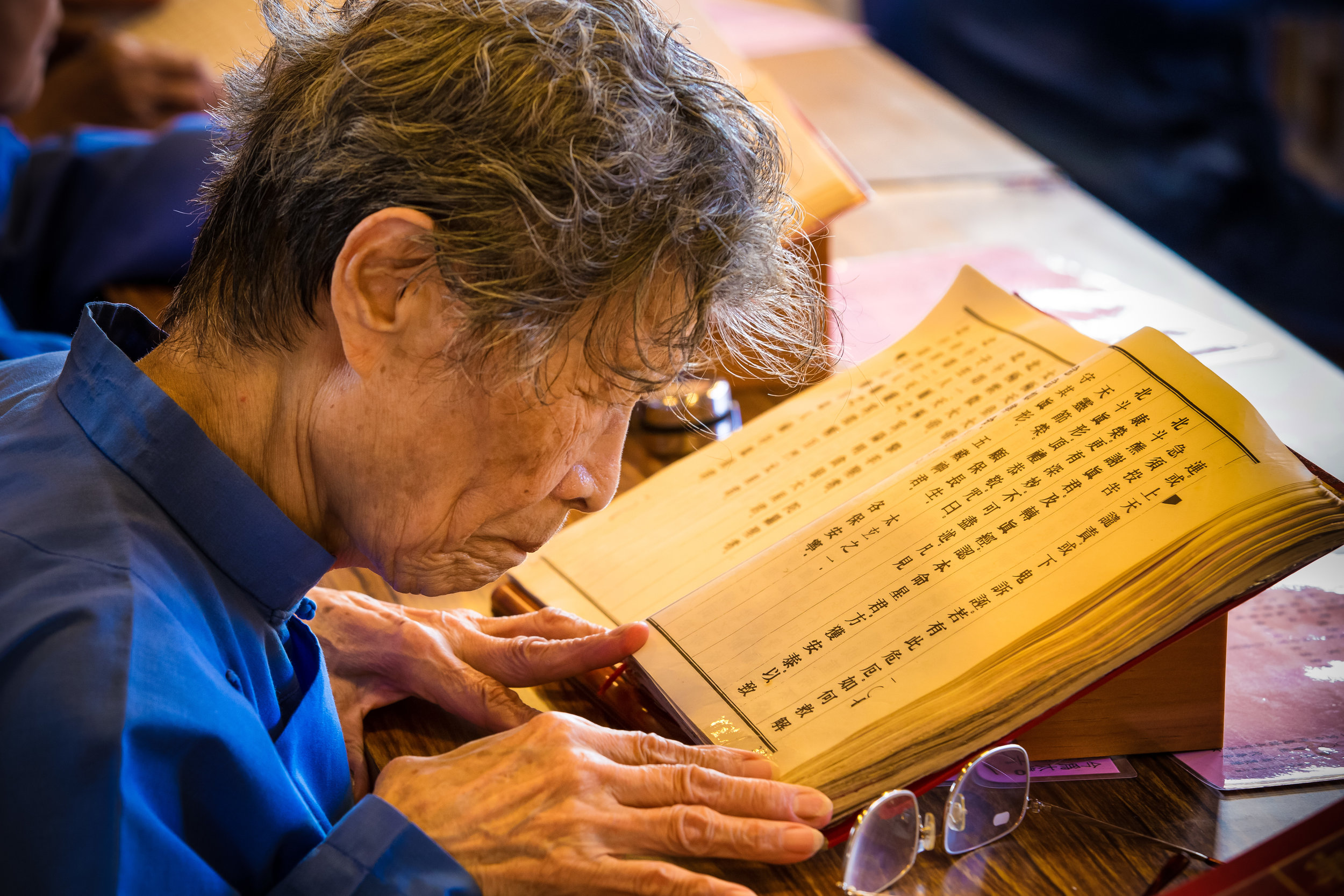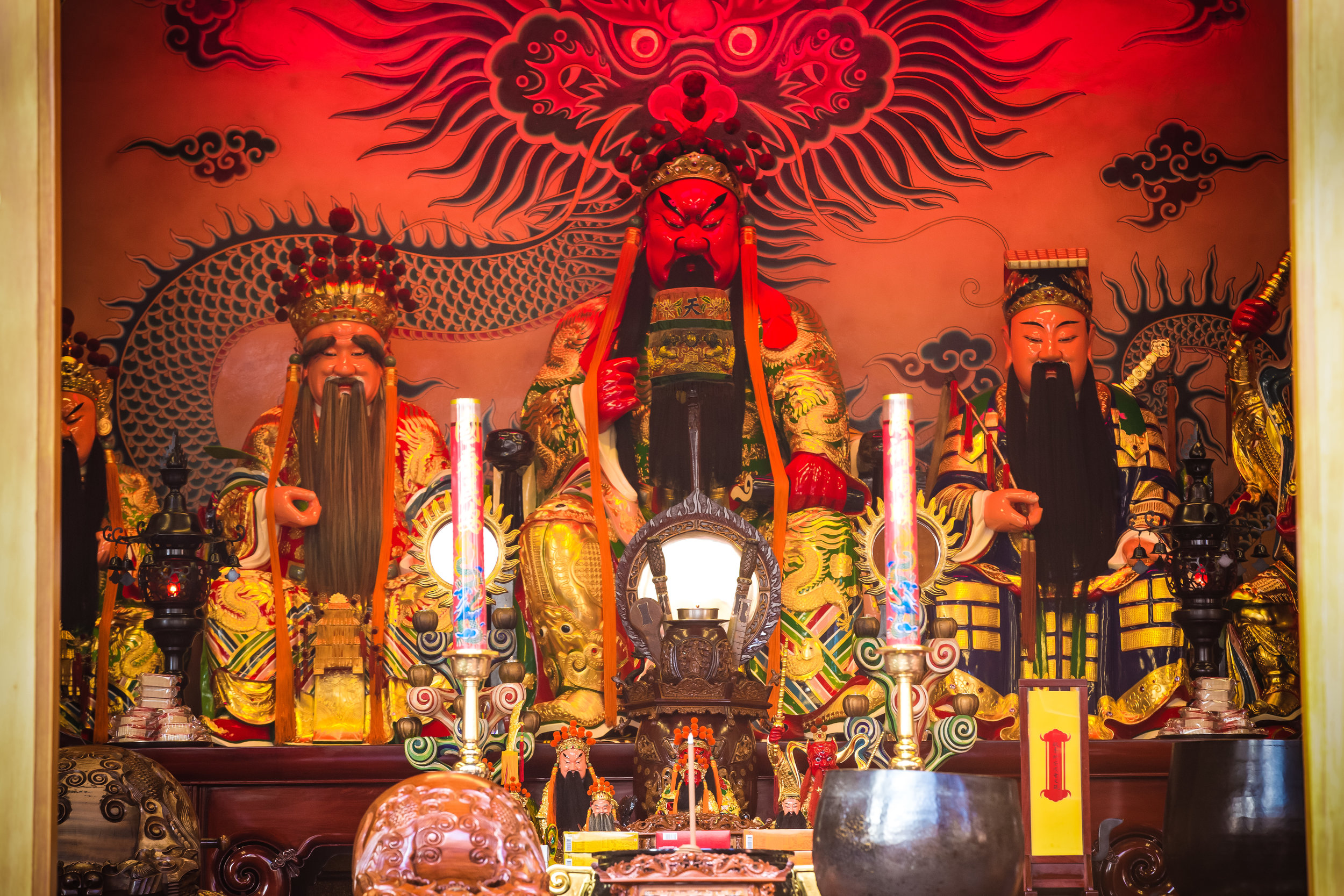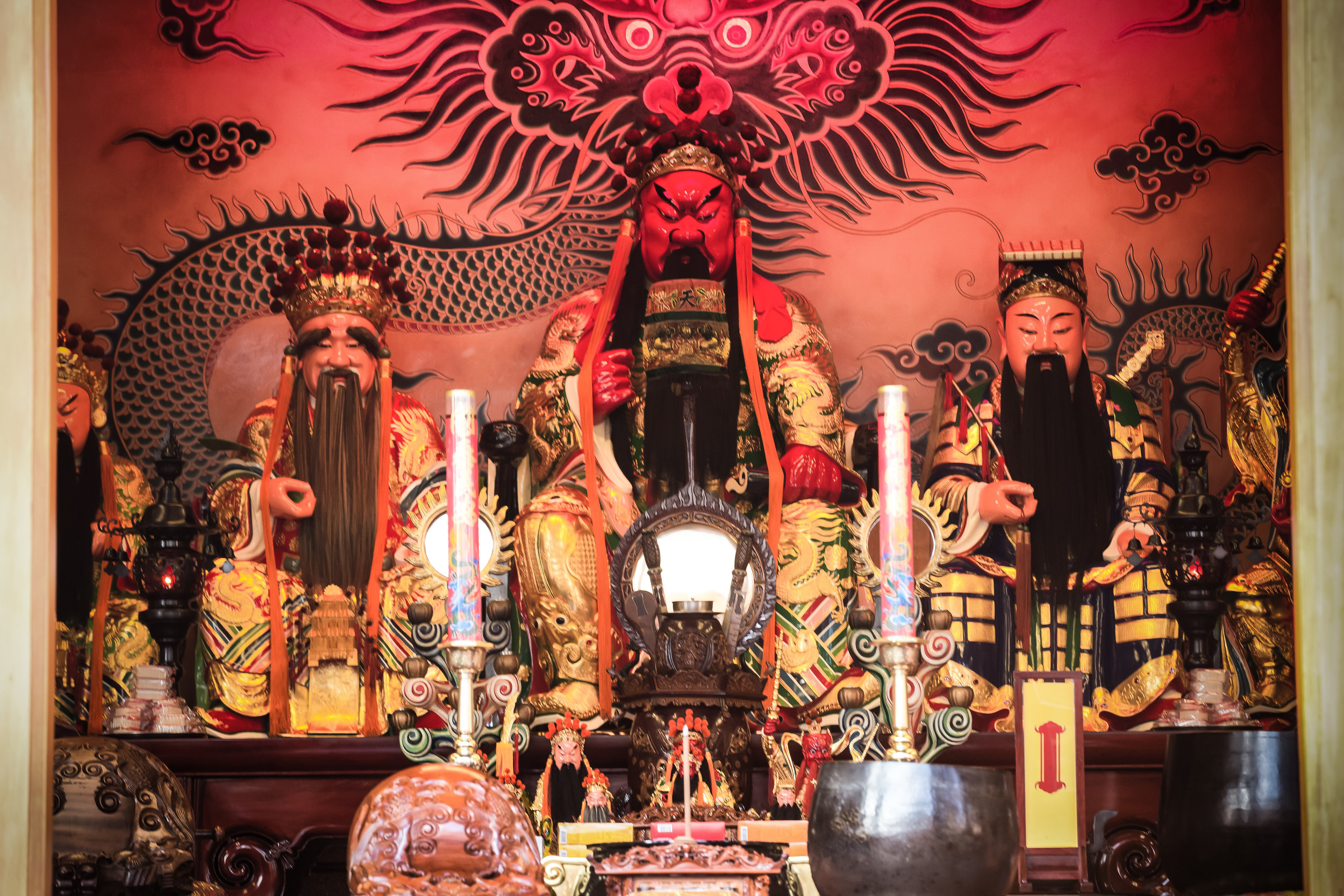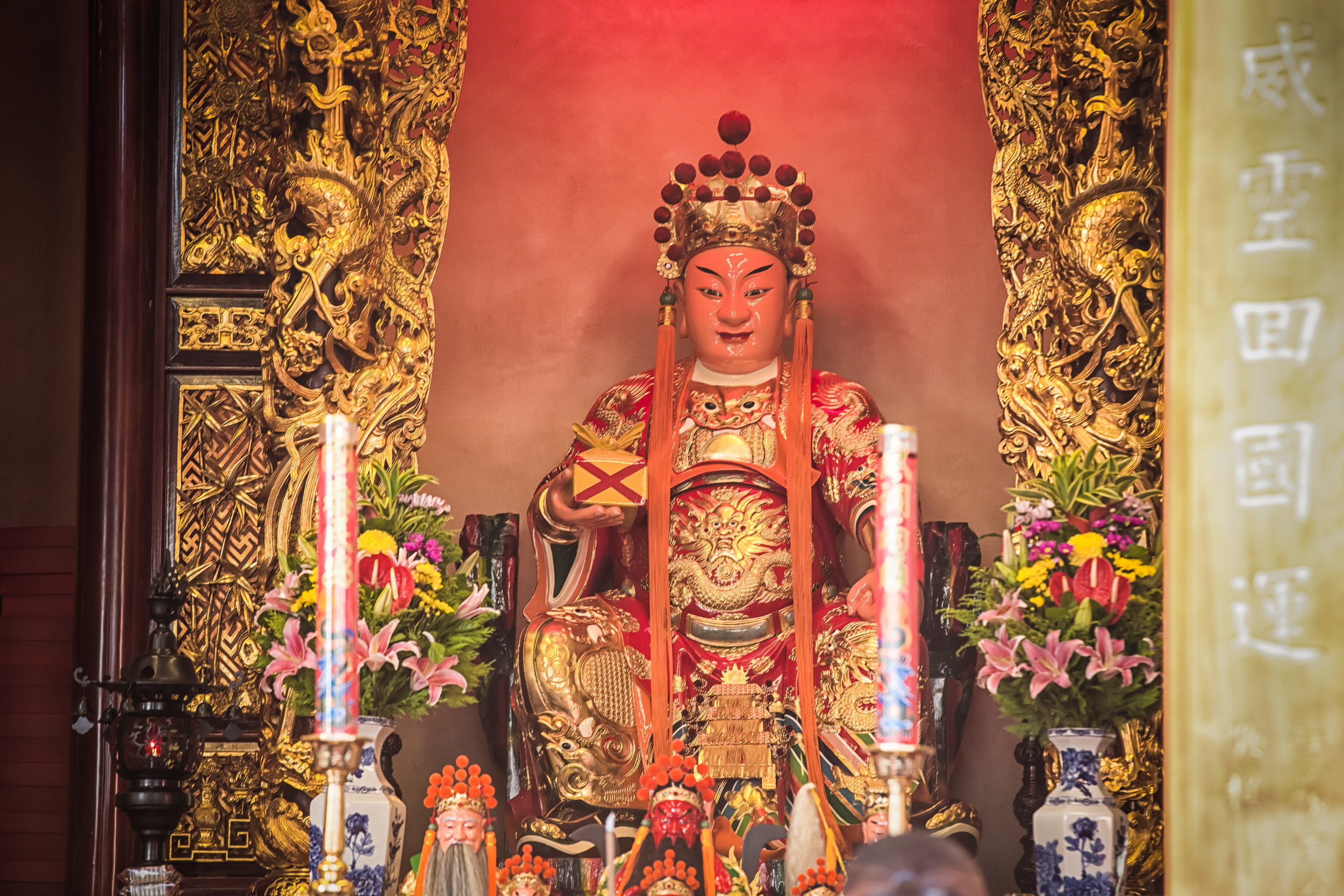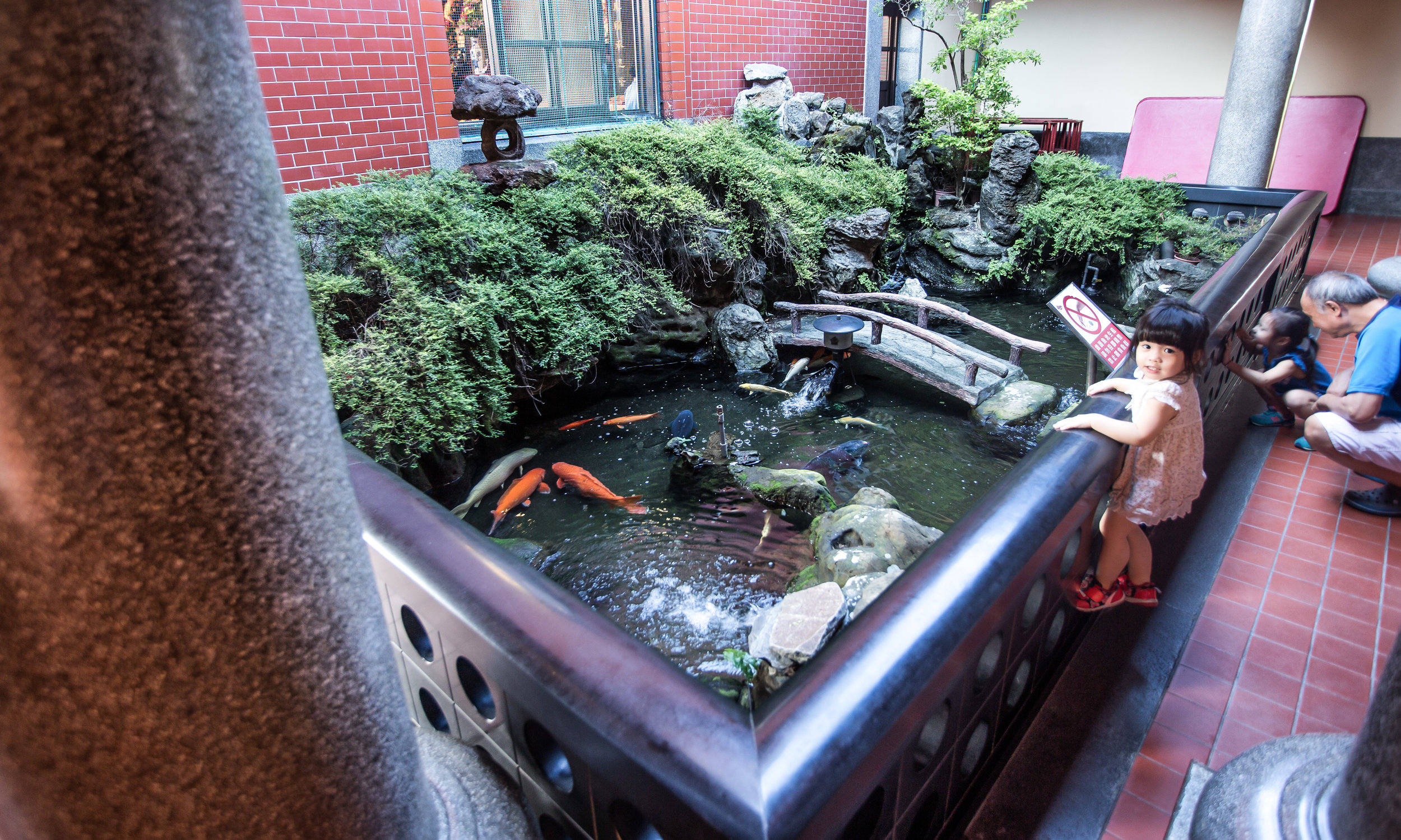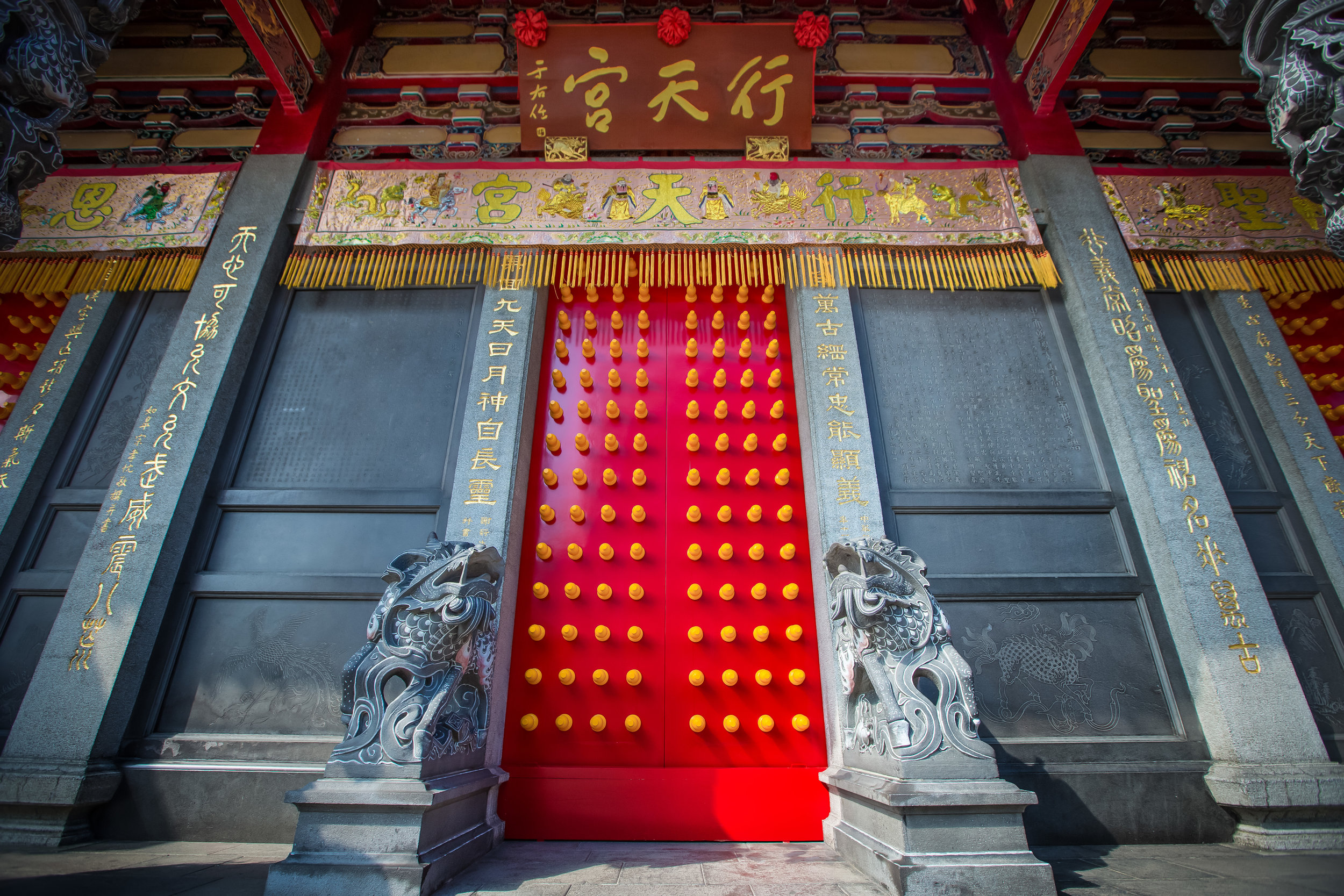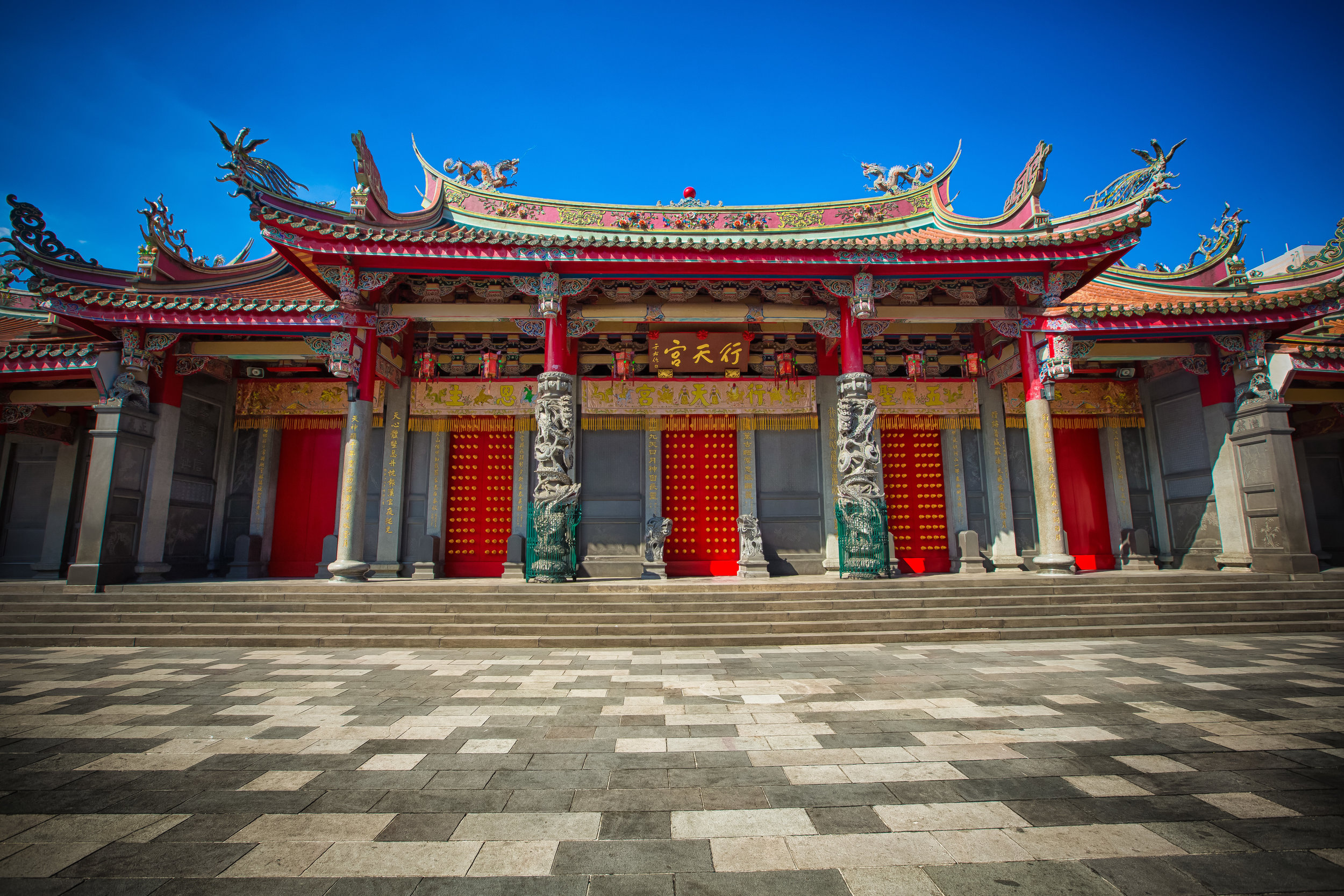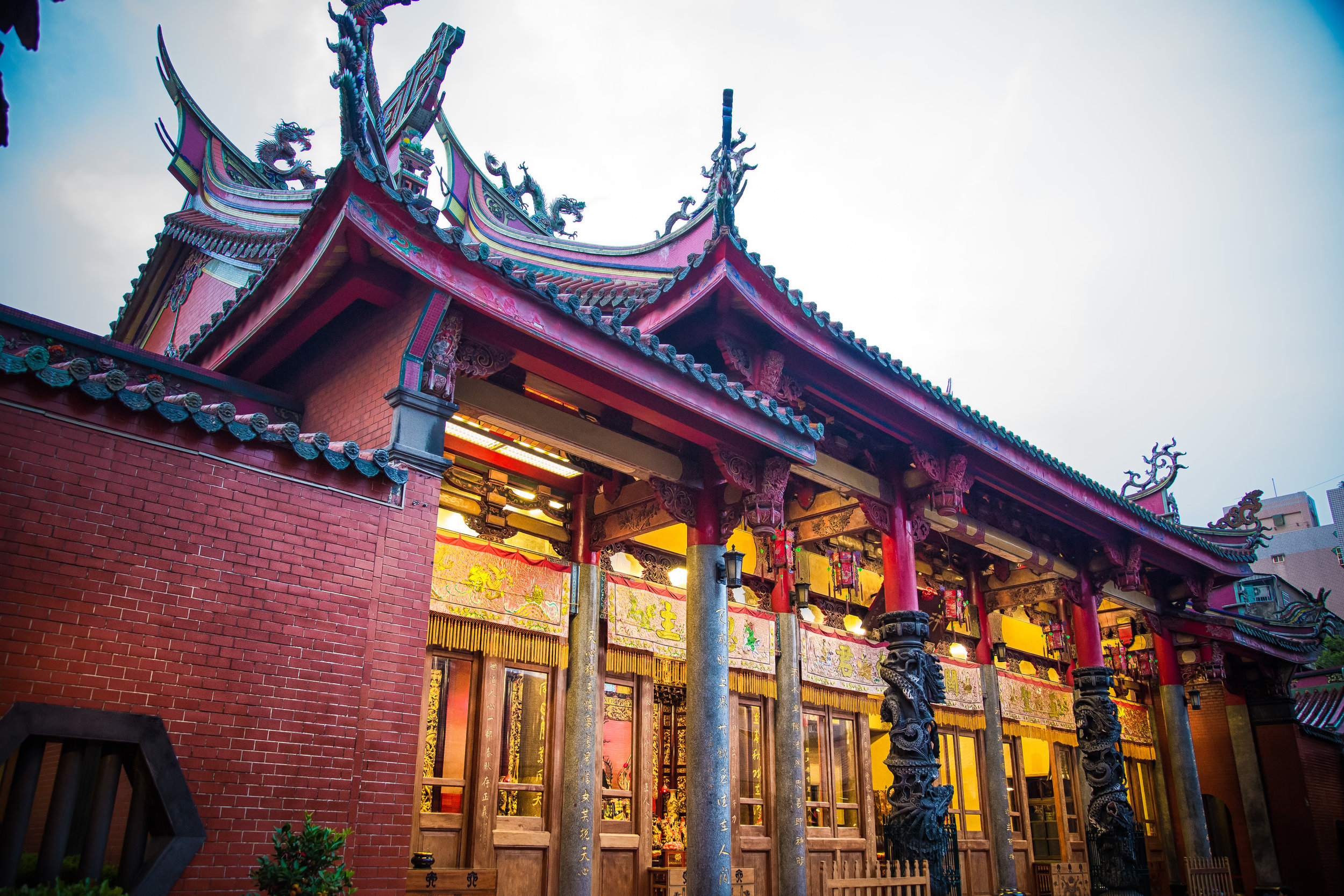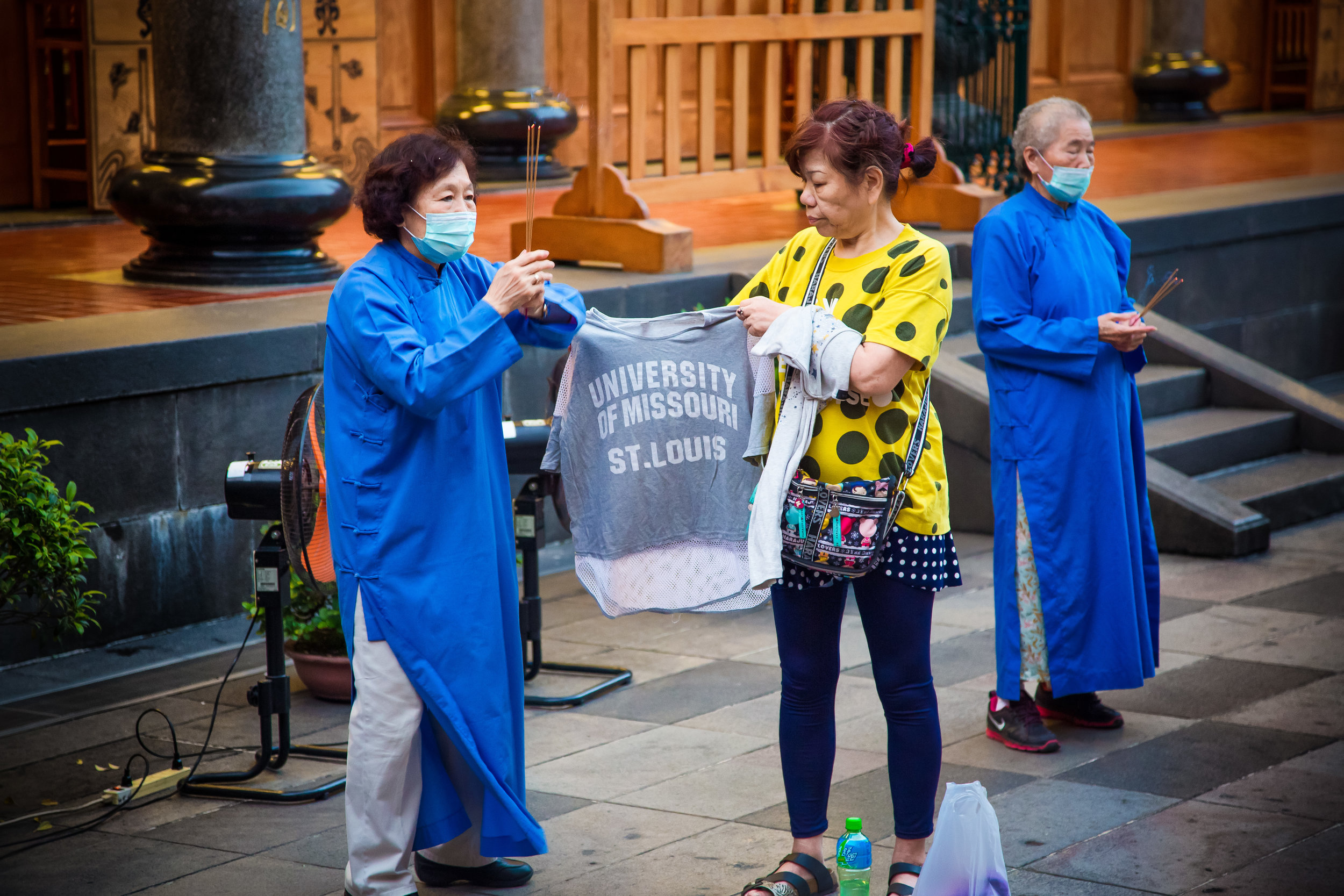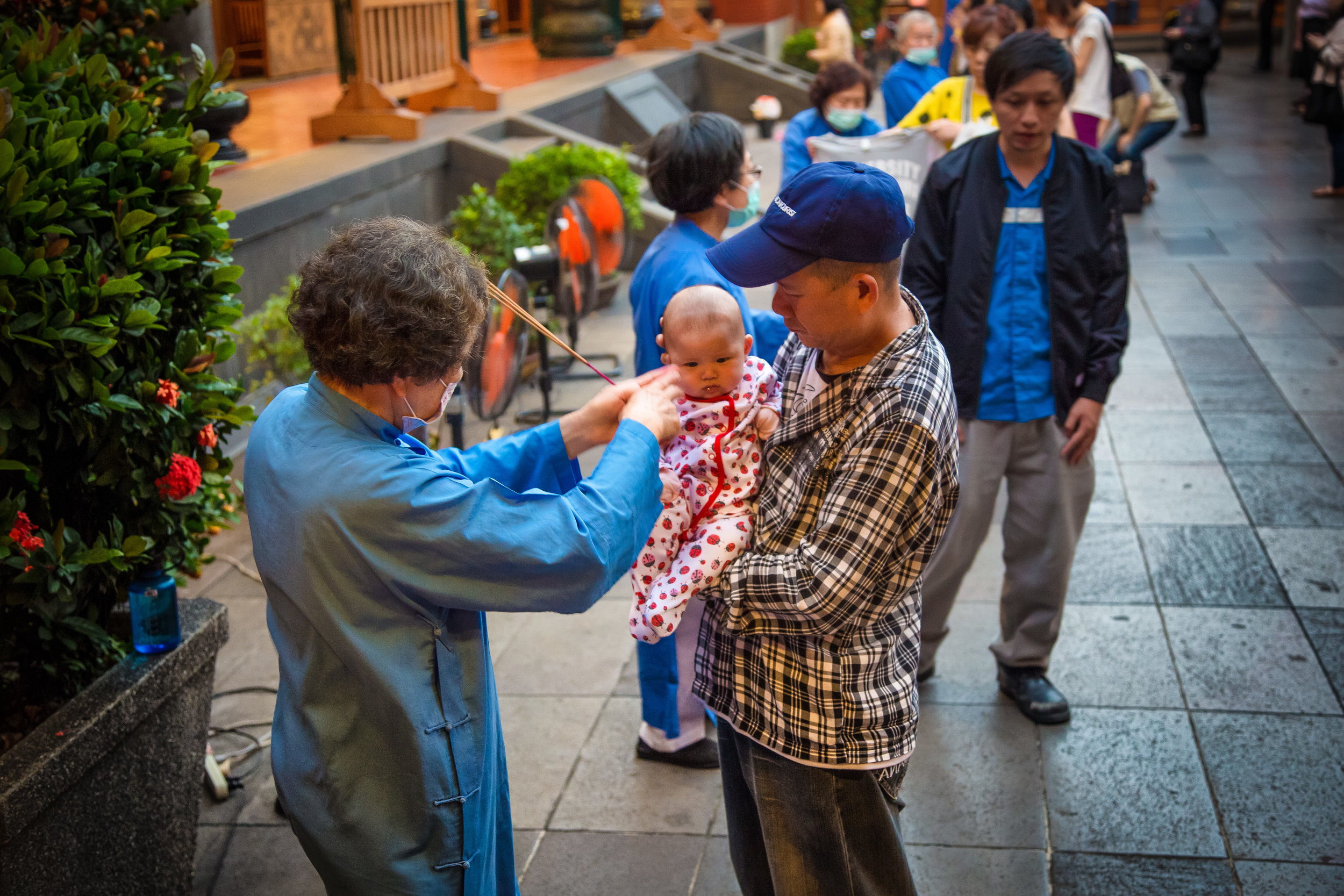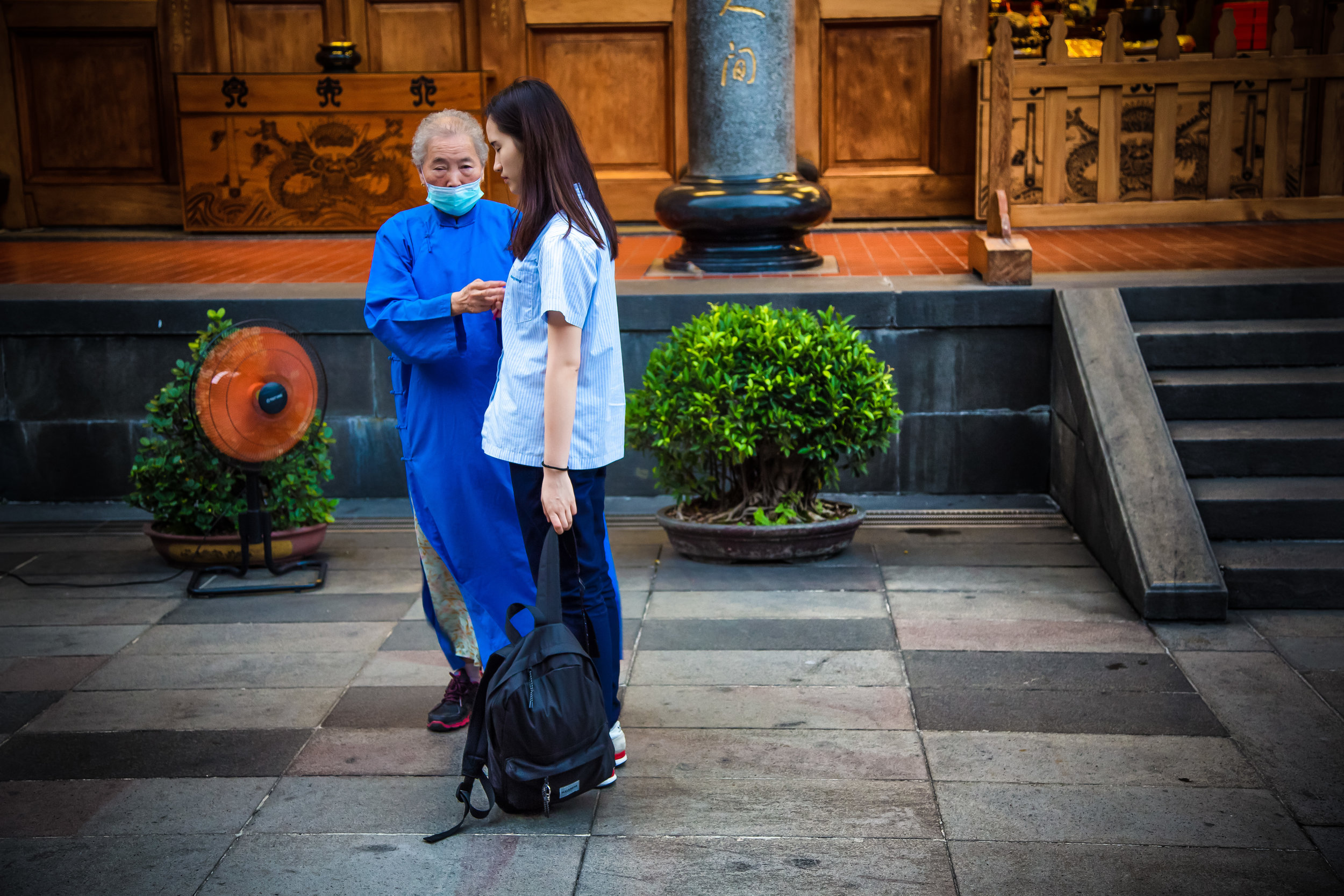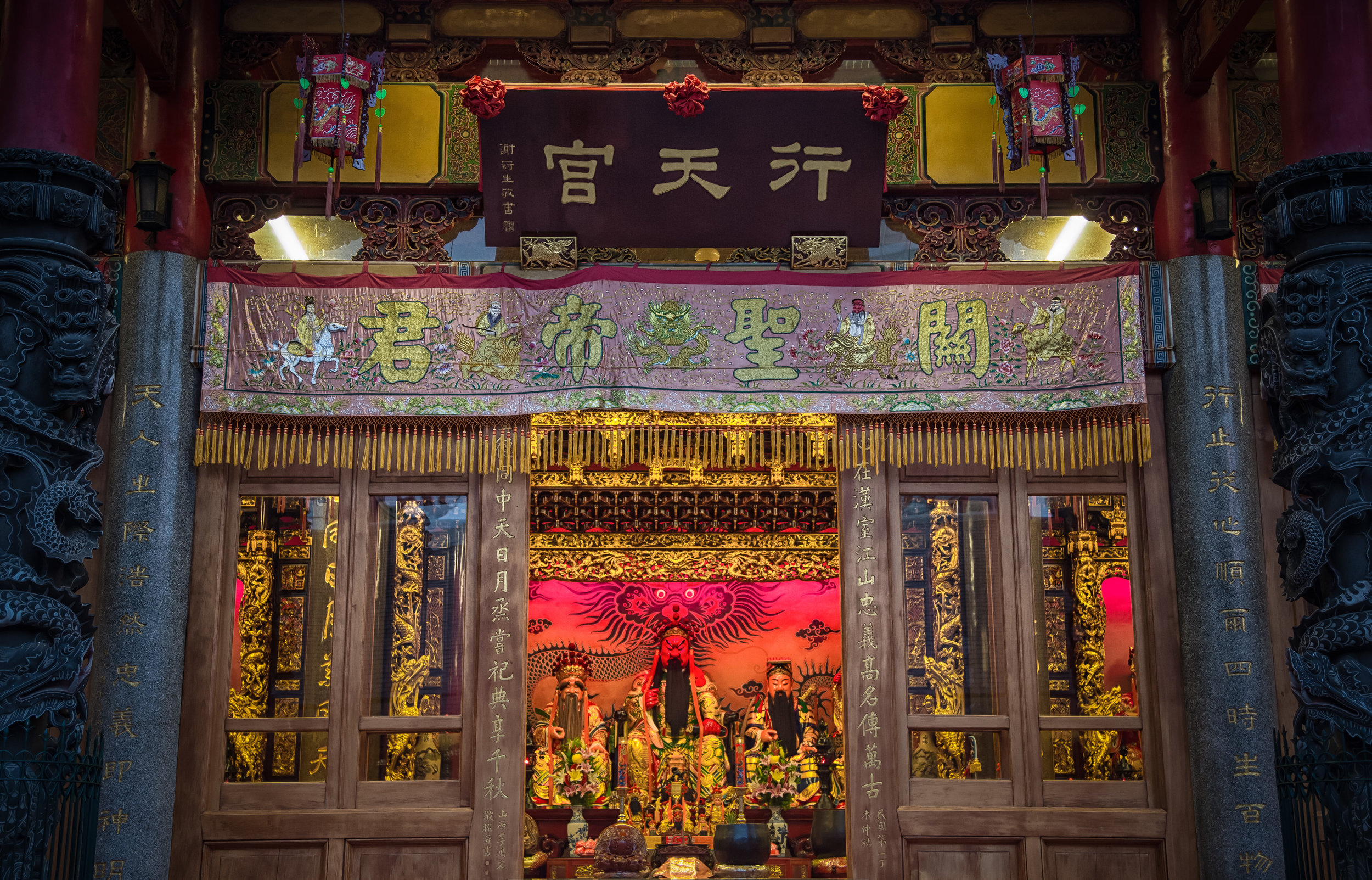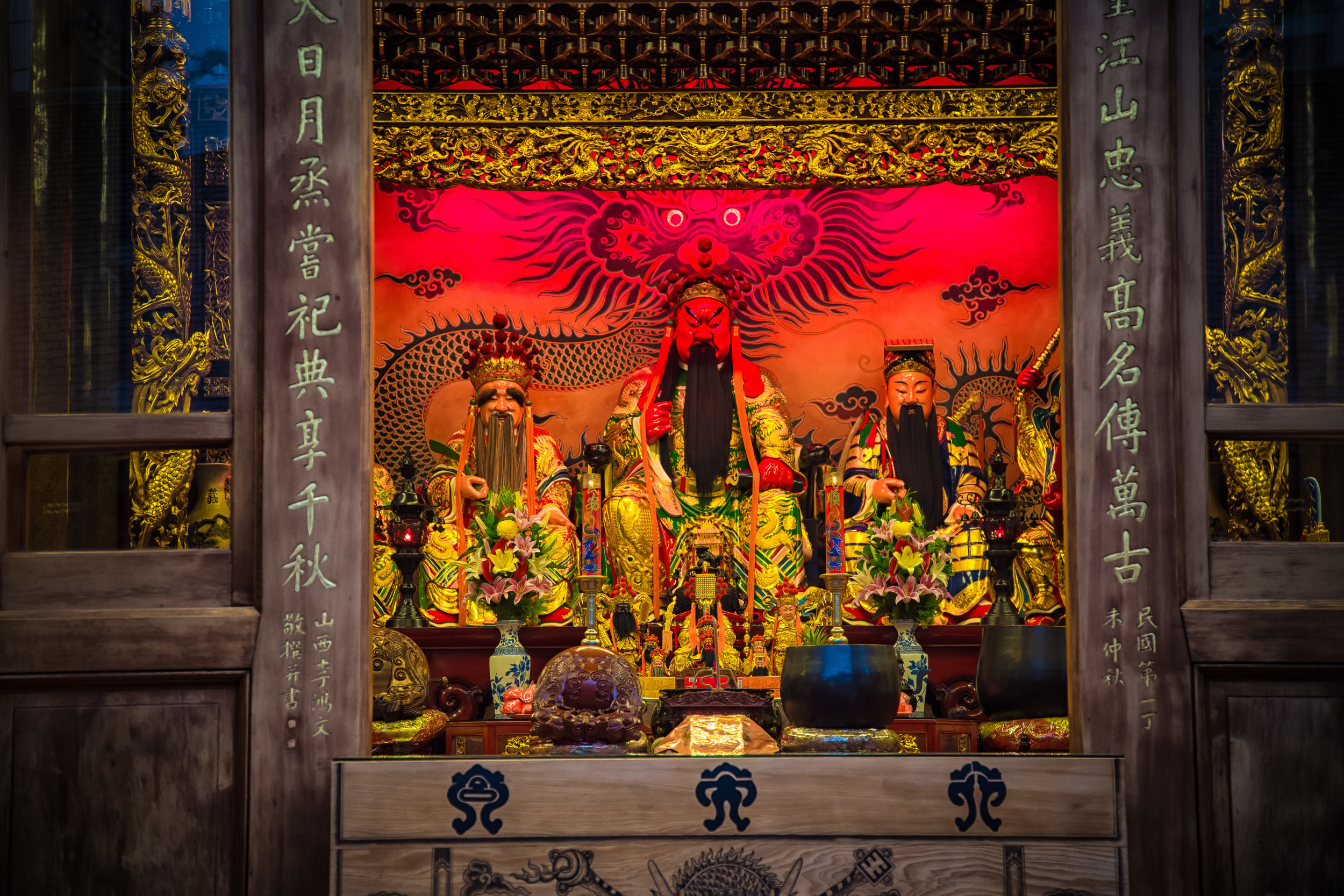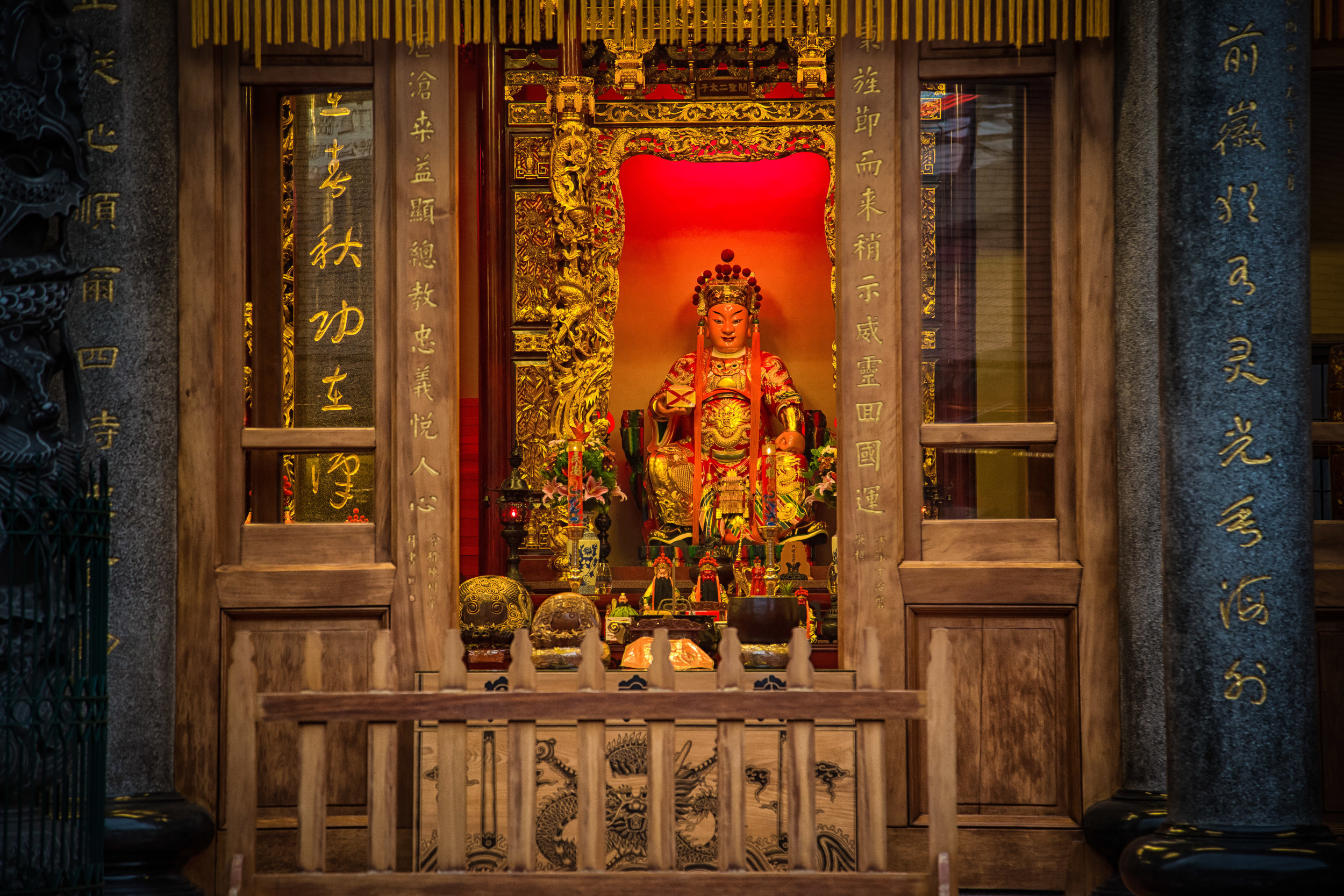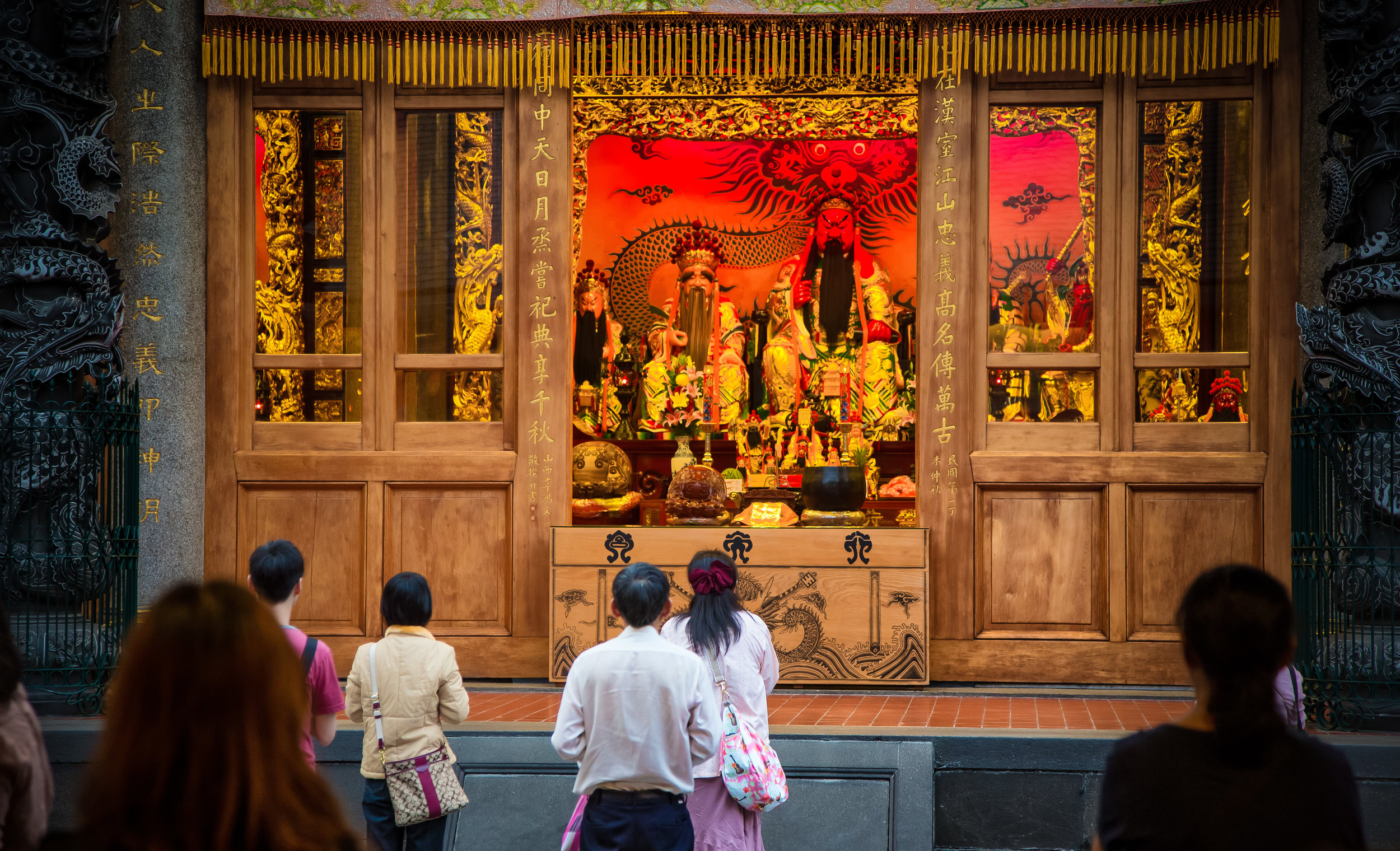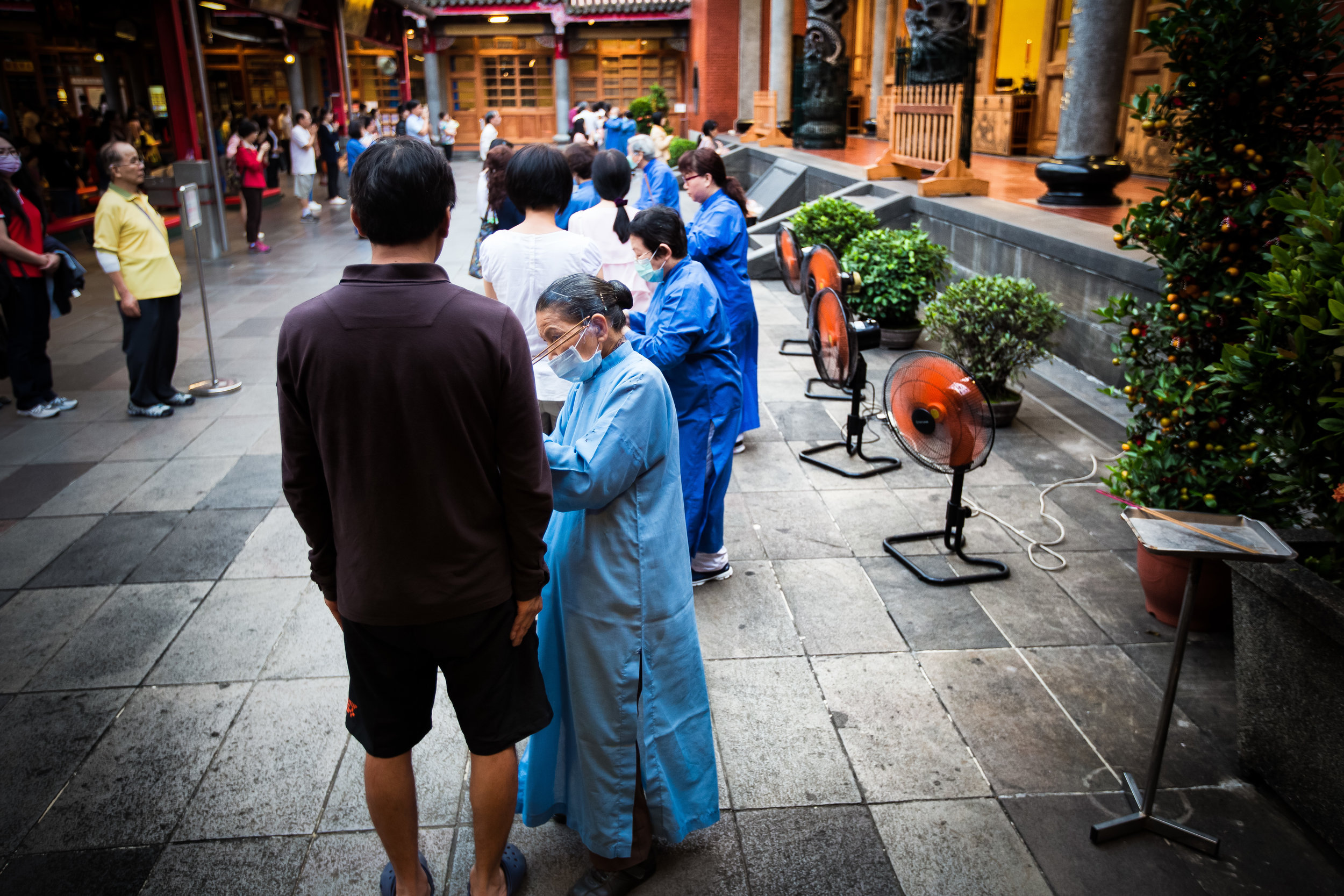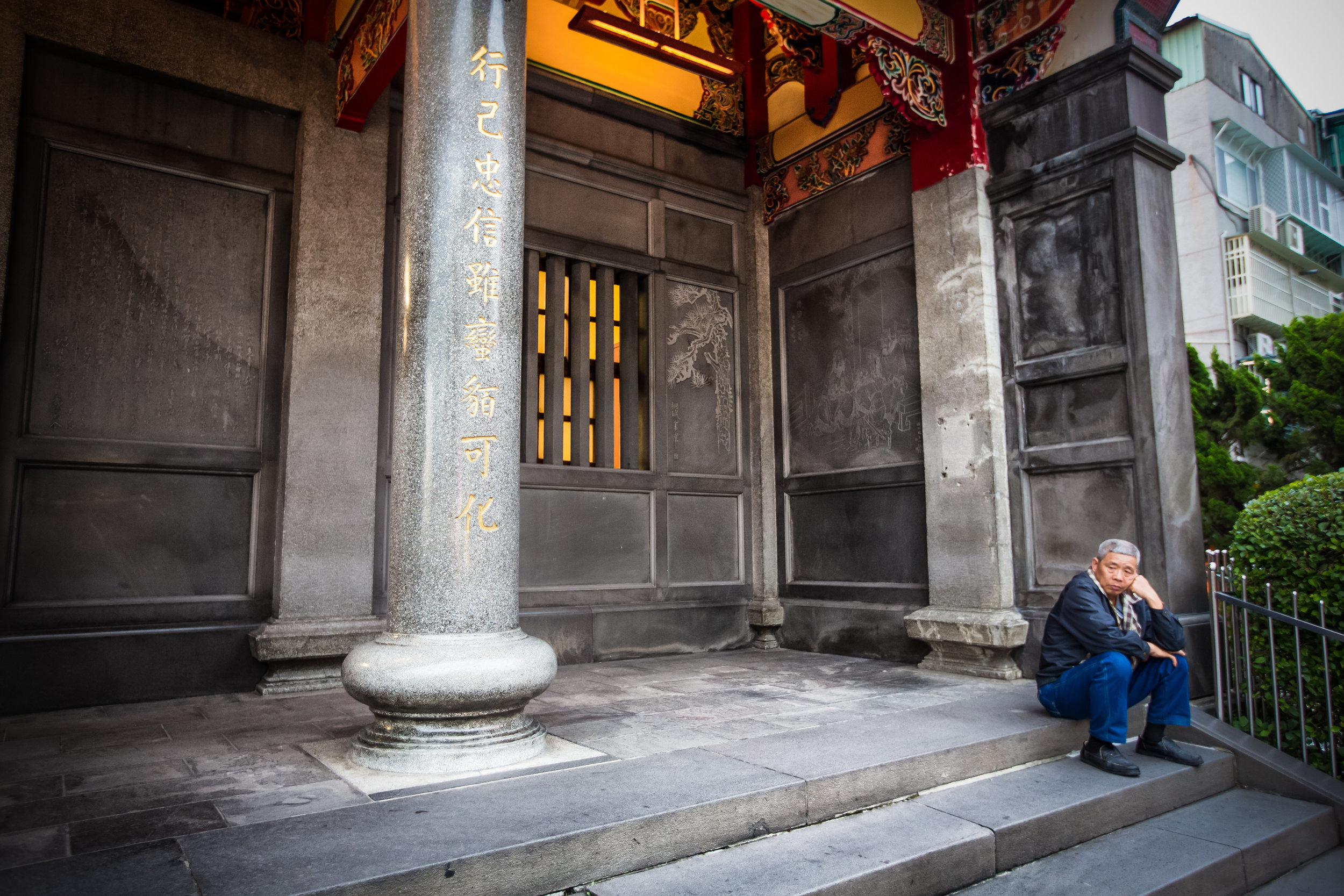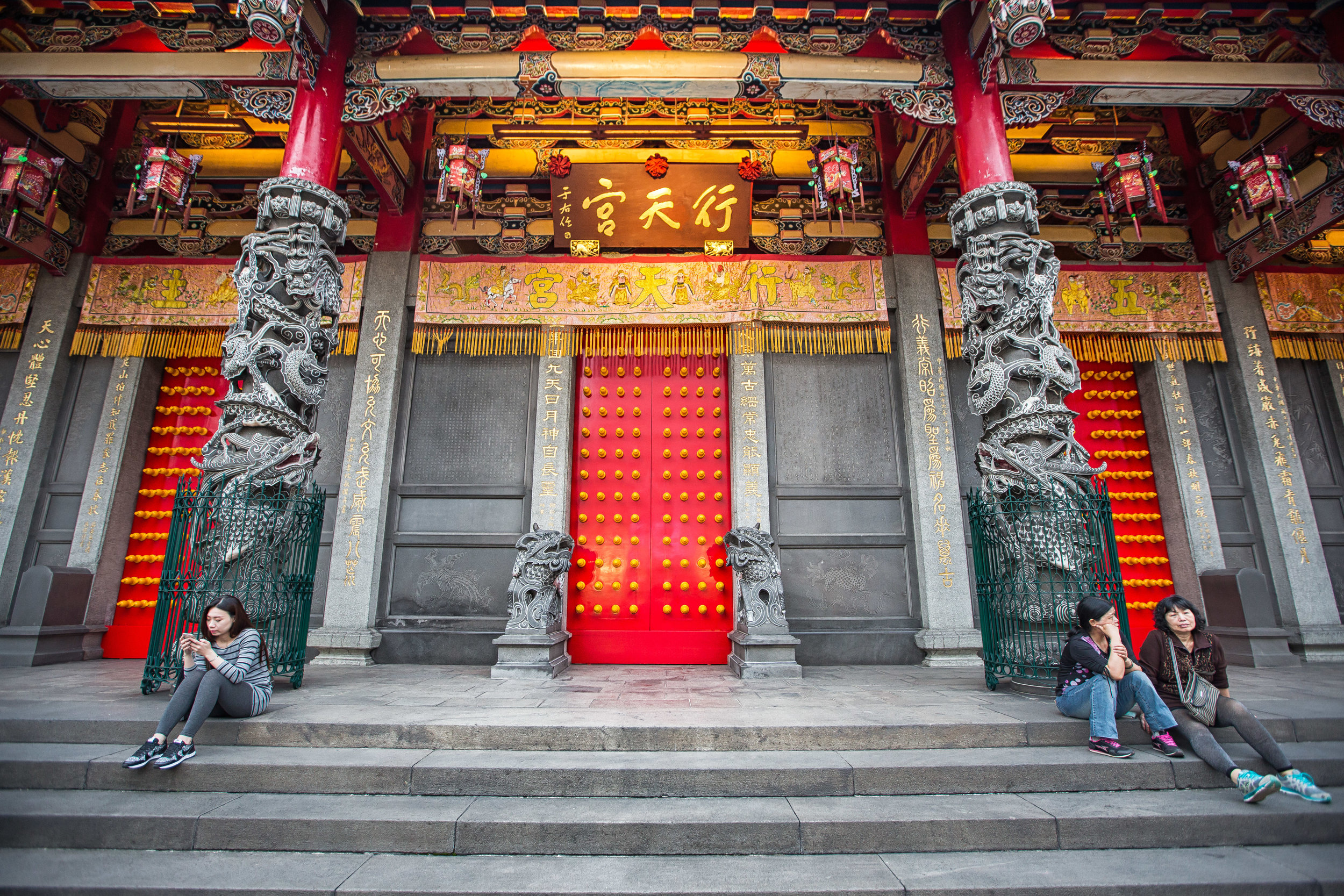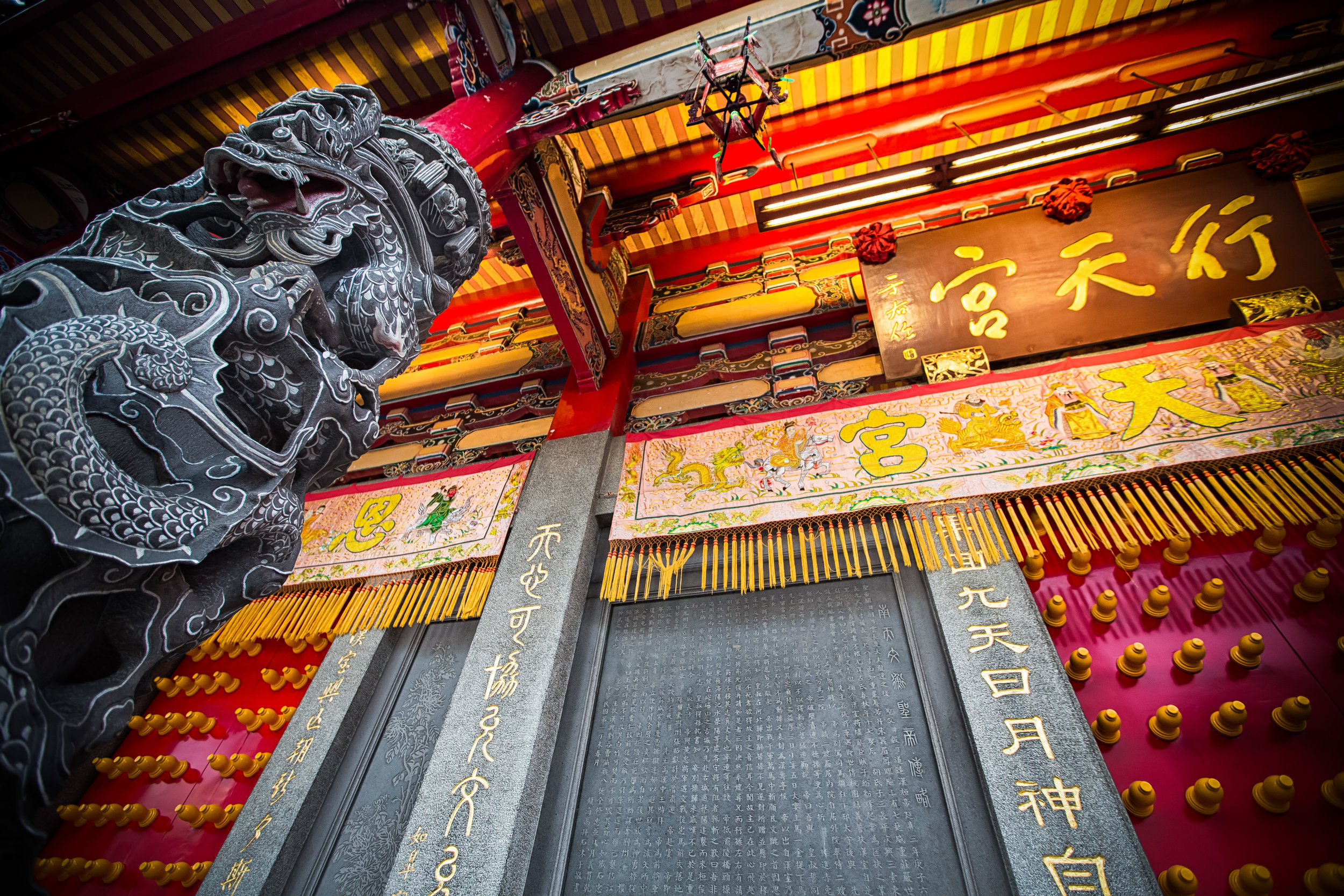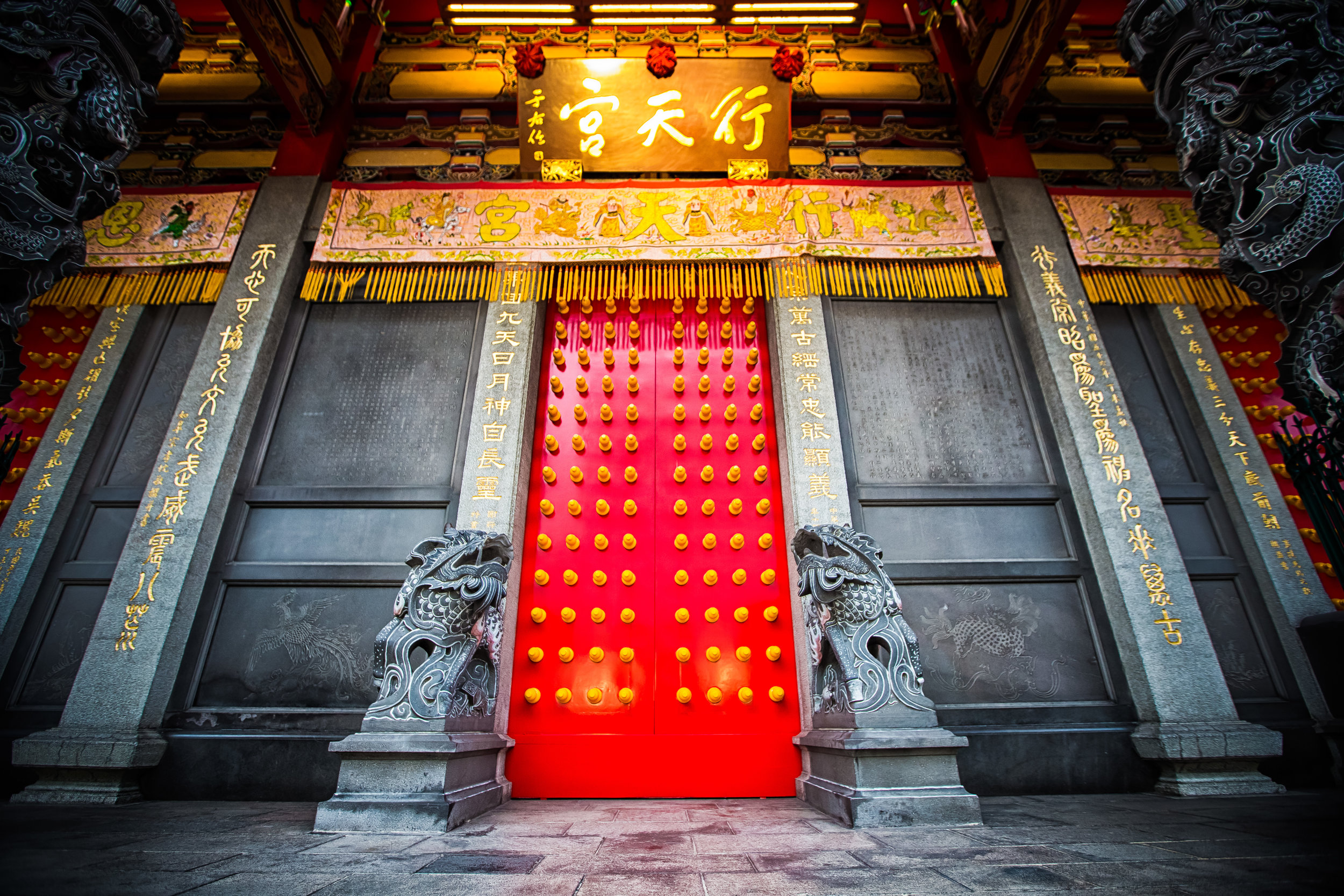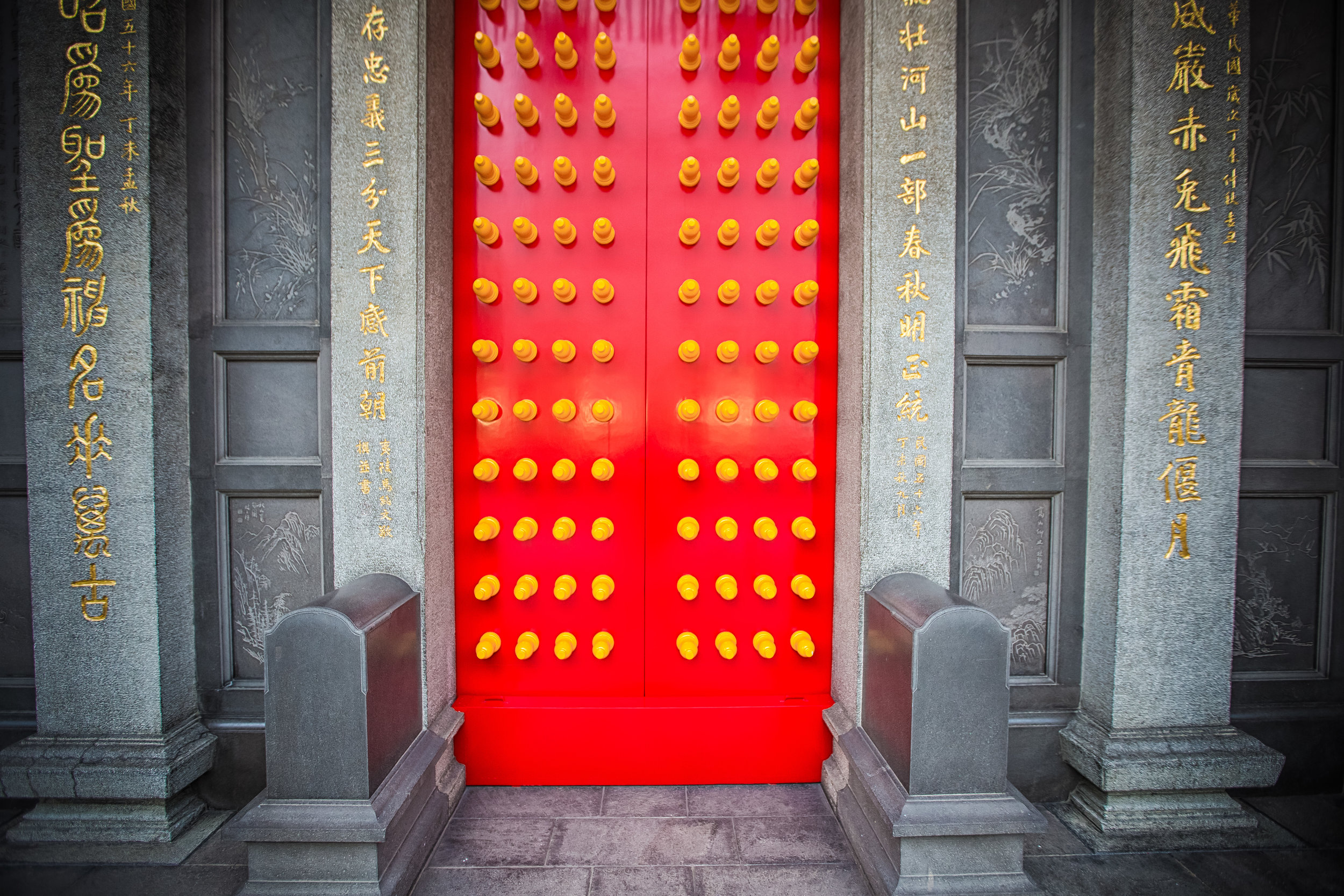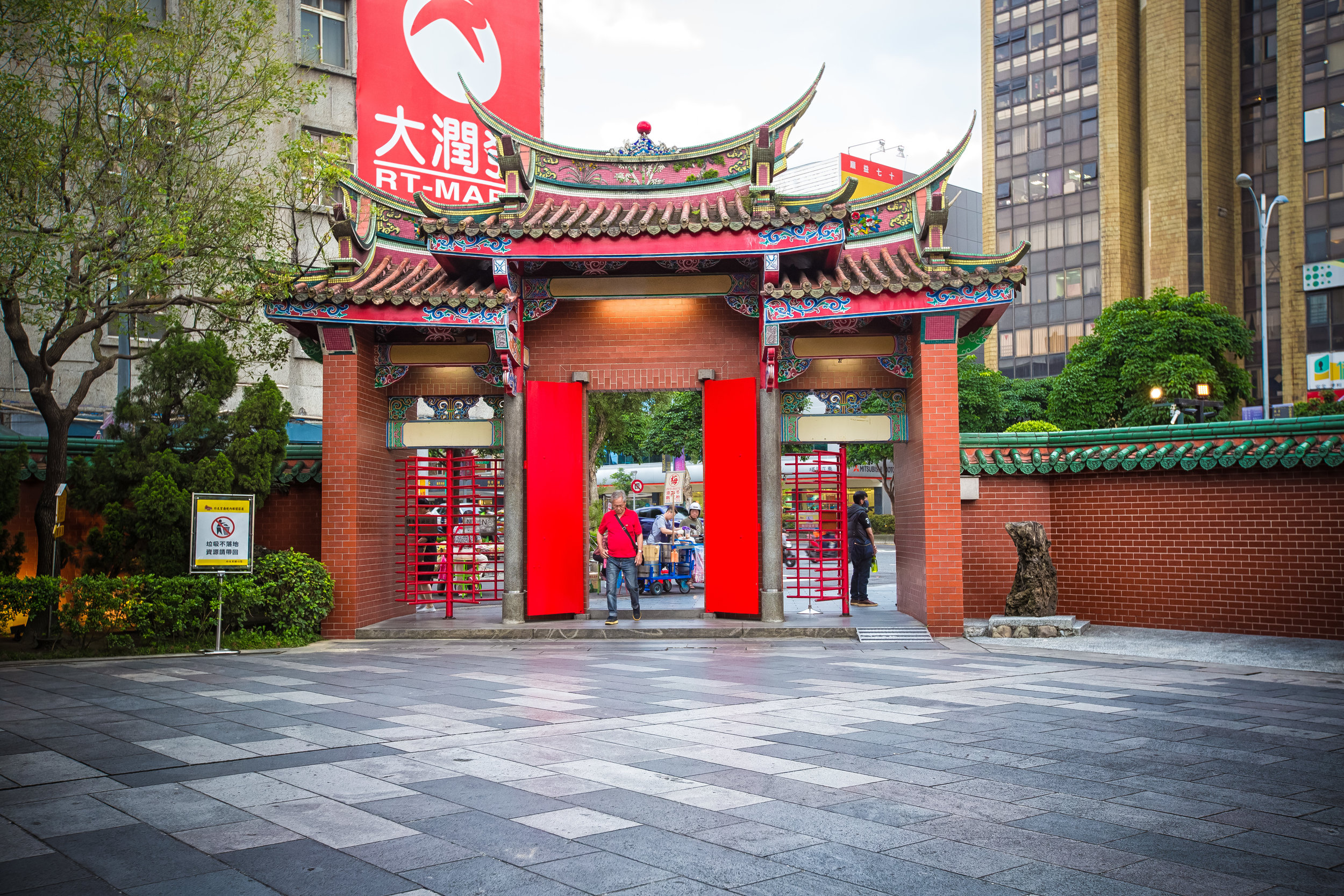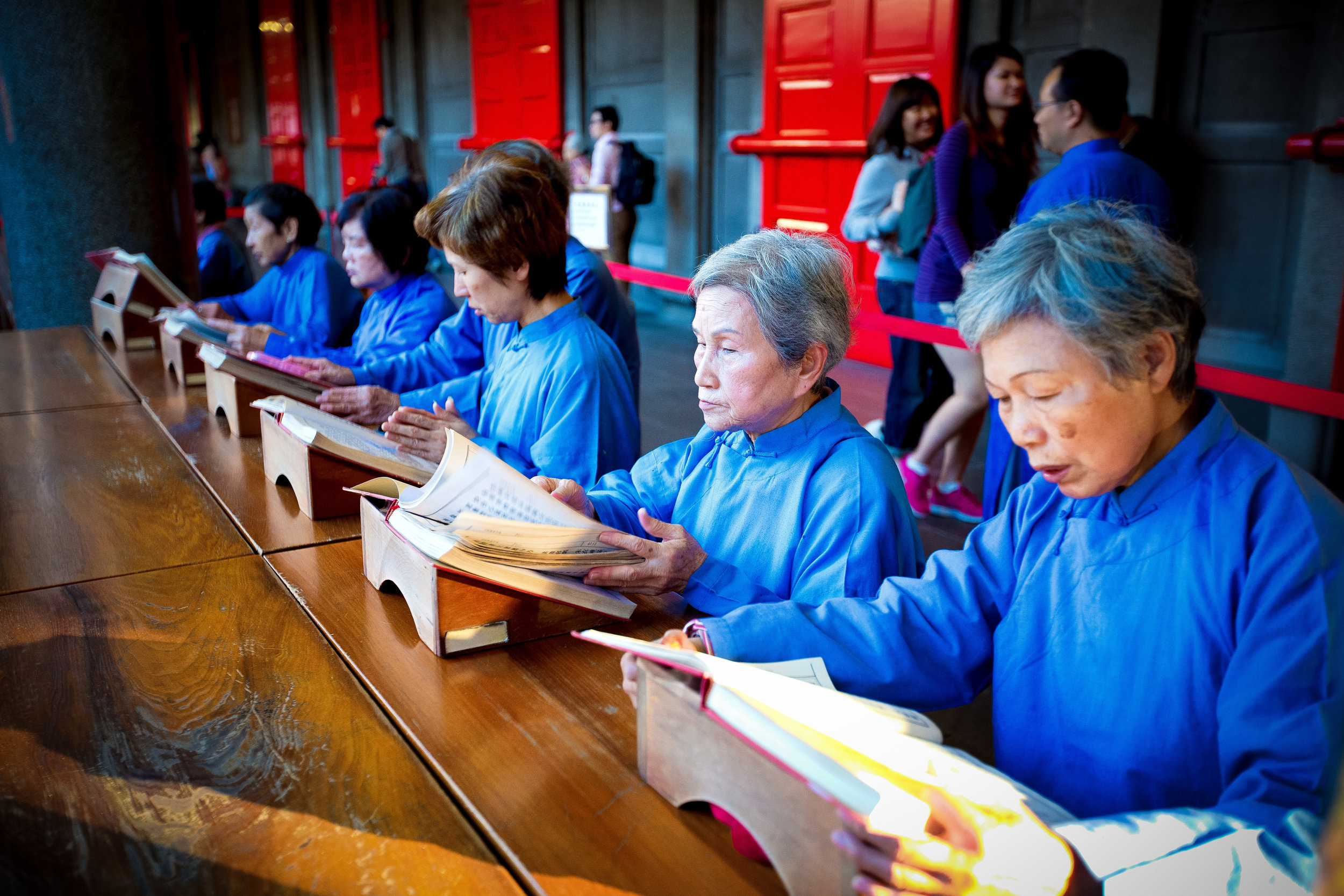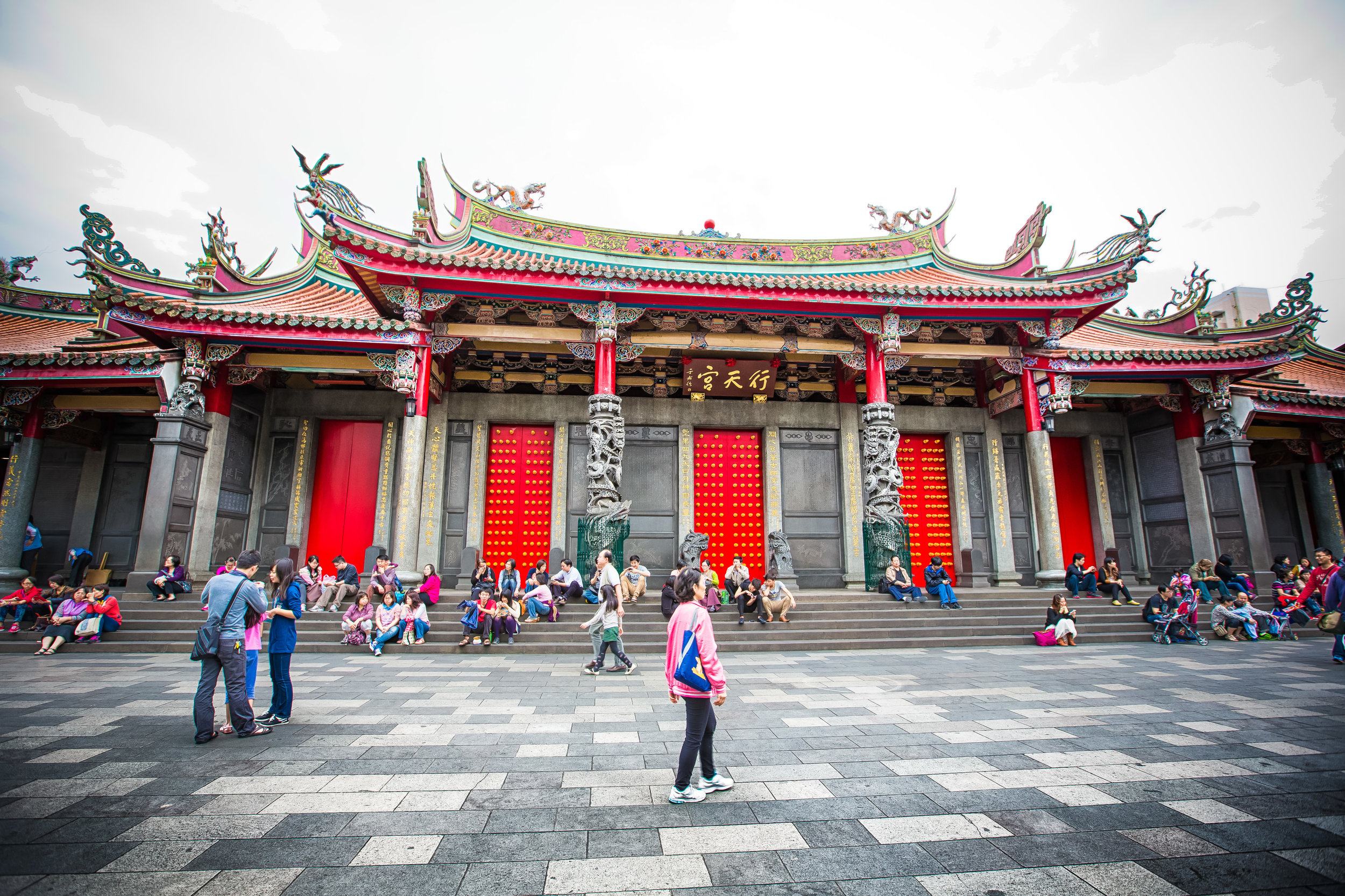Modern Taiwan is a mixed bag of many different ethnicities, cultural influences, traditions and histories, but one of the uniting factors that brings people together is that of the deep-rooted spiritual and religious traditions practiced by the people across the nation.
As visitors to this beautiful island nation, whatever past experiences you may have had while traveling in other countries, or any preconceived notions may have about the combination of tourism and religion, you really don’t have to worry about any of these things when you’re here. If you take the time to visit any place of worship in this country, you’ll never have to fear being approached by weirdos wanting to convert you, nor will anyone ever hit you up for donations.
For the people of Taiwan, spirituality is something that is considered to be private, and you’ll discover that people are extremely tolerant and respectful of others. Suffice to say, unlike so many other places around the world, its highly unlikely that anyone in Taiwan will ever ask about your religious beliefs, and that is one reason why religious conflict is something that seems almost unimaginable here.
That being said, the religious experience here is also a mixed bag that includes ‘zen-like’ solitary experiences where you might find yourself enjoying beautiful mountain views, listening to the humming of Buddhist chants while sipping on some locally grown tea - or you could find yourself walking amongst crowds of thousands of people in the midst of a rambunctious procession of drum-beating trucks with fireworks and firecrackers being set off mere meters away.
For the most part, the people of Taiwan are polytheistic, practicing a blend of Buddhism, Taoism and Chinese Folk Religion. Nevertheless, thanks to democratic reforms over the past few decades, religious diversity is a cherished and protected right, allowing the people of Taiwan the freedom to practice any faith they choose - or to come up their own religion if they see fit! As of 2020, the government officially recognizes twenty-six different religions, but save for some foreign imports like Christianity, Islam, Mormonism and Scientology, most of them are related to, or offshoots of the big three mentioned above. Data indicates that nearly 75% of the population identifies with one of these three religions. From personal experience however, I’d argue that these numbers are likely skewed by the fact that most people make little to no differentiation between the three, so when asked on an official census, they likely just checked a box.
Taiwan’s places of worship come in all shapes and sizes, ranging from miniature shrines, located along mountain paths to massive awe-inspiring palaces - so with more than 30,000 places of worship throughout the country, you’d probably think that it would be difficult to choose just a handful that stand out above the rest, but that actually isn't the case. The so-called 'big' temples, in Taipei at least, are easily identifiable, and each of them share a rich and interconnected history with the local community and the immigrants who settled here centuries ago. When it comes to the most influential places of worship in Taiwan, size is rarely one of the factors that ultimately determines the significance of one of these places, and you’ll definitely see that on the list below. That being said, one thing you’re likely to notice is that the further you travel outside of the capital, the larger some of these places of worship become.
When I originally wrote this article in 2017, I was still somewhat new to the whole travel blogging thing, so after about six years, I’ve decided to give the article a bit of an update. Part of the reason I’m doing this now is because I’ve observed in recent months that quite a few visitors have been landing here, which I suppose is due to the fact that the pandemic is over and tourists have started visiting the country again. Obviously, I’ll maintain the same format as the original article and introduce three of the most important places of worship in Taipei, but I’m also going to include a few honorable mentions, which have also become pretty popular destinations for international tourists visiting Taiwan.
Before I start though, I should probably mention that after I published this article, I did a follow up with a similar article listing the ‘Top Three’ temples in Bangka (艋舺), which is another list of temples that focuses entirely on one of Taipei’s most historic districts. However, you’ll notice that there is quite a bit of overlap between the two lists, which goes to show how important that part of the city has been with regard to its development.
Taiwan’s capital is a beautiful modern metropolis, and is one of Asia's leading economic hubs. The city has developed at an amazing rate over the past few decades, becoming a high-tech urban center that, to the benefit of all of its citizens, pays respect to the beautiful mountains and natural environment that surrounds it. The capital is famously home to numerous mountain vistas that, like the city’s places of worship, have also become popular tourist destinations.
Link: Taipei Cityscapes Guide
In terms of temples though, Taipei is well-known for its so-called 'Top Three Temples’ (台北三大廟門), which are cultural relics, each of which date back several centuries to the days when the city was first founded. The travel guides that introduce the country often talk about these temples, which are just as often jam-packed with the faithful as they are with tourists, who visit to learn more about Taiwan's unique cultural and religious heritage.
Obviously, the capital, like the rest of the country is home to its fair share of places of worship, so when it comes to identifying the ‘Top Three’, you’ll find there is a bit of inconsistency between foreign travel guides and the opinions of locals as to which temples actually belong on the list. While some might disagree, my list will focuses more on what locals consider to be the most important places of worship in the city, but I'm also going to include those that are also often featured on the list, and I’ll provide links to individual articles that I’ve written about each of them so that readers can find more in-depth information about them.
Bao-An Temple (大龍峒保安宮)
The Dalongdong Bao-An Temple in Taipei’s Datong District (大同區) is the unanimous top-pick on all of the lists for Taipei's 'Top Three' temples. The temple has been recognized by the UNESCO Asia-Pacific World Heritage Awards for Cultural Heritage Preservation, and is regarded as a Taiwanese national treasure. The temple has a history that dates back to 1742, and is intertwined with the history of Hokkien (閩南人) immigrants from Fujian (福建), who settled in Taipei and started to develop the city several centuries ago.
Bao-An Temple should be high on the list of locations for a travelers itinerary while visiting Taipei, especially if your trip coincides with the annual Baosheng Cultural Festival (保生文化祭) festivities that celebrates the birth of the temple’s primary deity, the Baosheng Emperor (保生大帝). Similarly, a visit to Bao-An Temple also provides visitors with the opportunity to check out Taipei’s beautiful Confucius Temple (台北孔廟), which is conveniently located next door.
Address: #61, Hami Street, Datong District, Taipei. (臺北市大同區哈密街61號)
Longshan Temple (艋舺龍山寺)
Bangka’s Longshan Temple is probably one of Taiwan's most well-known temples and as one of the busiest places of worship in the city, Longshan Temple is constantly jam-packed with worshipers and tourists, alike.
The temple has a history that dates back to 1738, and just like Bao-An temple, also shares a close relationship with the Hokkien immigrants who came to Taiwan several centuries ago. The temple is primarily dedicated to Guanyin (觀音菩薩), the Buddha of Compassion, but like many other places of worship in Taiwan, it also has shrines set up to Taoist and local folk religion deities, making it a convenient place to visit.
When it comes to architectural design, this temple is second to none, and is arguably one of the most beautiful specimens of southern Chinese-style temple architecture in Taiwan, if not the whole world.
Located next to the Longshan Temple MRT Station (龍山寺捷運站), this is one of the most convenient of the ‘Top Three’ temples to visit, and it’s important to note that it is located within the heart of the historic Bangka (艋舺) district of Taipei where you’ll find a number of other popular tourist destinations, including the Bopiliao Historic Block (剝皮寮歷史街區), Shintomicho Cultural Market (新富町文化市場), Huaxi Street Night Market (華西街夜市), etc.
Address: #211 Guangzhou Street, Wanhua District, Taipei (台北市萬華區廣州街211號)
Bangka Qingshui Temple (艋舺清水巖)
While Bao-An Temple and Longshan Temple are always featured on the list of the 'Top Three' temples, Bangka’s Qingshui Temple seems to be the one that is 'questionable' as to whether or not it belongs on the list. This isn't to say that this temple isn't amazing, or that its history, which dates back to 1787 isn't as impressive. It just isn't as ‘busy’ as the other two temples, which often make the list, nor is it as popular with tourists.
Nevertheless, Qingshui Temple, like Longshan Temple and Bao-An Temple shares an interconnected history with the Hokkien immigrants who settled in Taipei several centuries ago. The temple is dedicated to Master Qingshui (清水祖師), a popular Buddhist monk and folk-hero whose worship was imported to Taiwan by immigrants from Fujian province in China.
As far as I’m concerned, Qingshui Temple makes the list as one of the 'Top Three' due to its age, and the important relationship it has played throughout history. That being said, I think it’s important to note that there are several ‘Qingshui Temples’ in the Greater Taipei area with the one in New Taipei City’s Sanxia District (三峽區) being incredibly influential, and one of my personal favorites.
Whether you agree or not that Bangka’s Qingshui Temple belongs on the list, no one can deny it’s history and its importance with regard to the development of the city, so even though it’s relatively quieter by comparison to the two above, it’s still one of the city’s most important places of worship.
Address: #81 Kanding Road, Wanhua District, Taipei (臺北市萬華區康定路81號)
Xia-Hai City God Temple (霞海城隍廟)
Dadaocheng’s Xia-Hai City God Temple is one of the temples that is often placed on the list of the 'Top Three' temples of Taipei, and is clearly deserving of such an honor - the temple which is now over 160 years old is an important place of worship for the people of Taipei, but unlike the other temples on the list, it has never been rebuilt. Thus, when you visit today, what you’ll see is more or less what you would have seen back in 1859 when it was originally constructed.
Even though the temple is primarily dedicated to the City God (城隍爺), it has become especially popular in recent years with tourists from Japan, who visit hoping to find luck in love thanks to the effort of Yue-Lao (月下老人), the god of match-making. Of all the places of worship in Taiwan that have enshrined this deity, the Xia-Hai City God Temple is probably the most highly regarded for his high success rate in helping people find a partner. You can be sure that during any visit to the temple, you’ll encounter singles from all over Taiwan seeking some divine assistance in their search for a significant other.
While this temple is not as large as some of the others on the list, the history that it shares with the development of the Dadaocheng (大稻埕) area of Taipei, serving as a protector of the city has helped to shape the Taipei into the place it is today.
So whether you’re looking for love, or just a cool temple to visit, the City God Temple on the popular Dihua Street tourist area is one of the city’s most important places to visit!
Address: #61, Dihua Street, Datong District, Taipei (台北市迪化街一段61號)
Xingtian Temple (行天宮)
Xingtian Temple is another one of the temples that often gets added to the list of the 'Top Three' temples in Taipei. Unlike the other temples, this one doesn’t have a long intertwining history with the development of the city. Constructed a little more than a half-century ago, the temple is not even remotely close in age as some of the other entries on the list, but don't let age fool you, the significance of this one cannot be understated. The temple is visited by an estimated 10,000 people each day, and even though it has a short history, it has become a quintessential place of worship, and also a major attraction for tourists.
Due to its age, and the lack of centuries-old traditions, the temple has become somewhat of a trendsetter in recent years making waves within the spiritual world in Taiwan. In an effort to reduce its carbon footprint, Xingtian Temple became one of the first major places of worship in Taiwan to ban the practice of burning paper or incense within the temple, which in turn has resulted in many other places of worship reconsidering some of their practices in order to protect the environment.
Primarily dedicated to Lord Guan (關聖帝君), a historic figure whose exploits are told in the "Romance of the Three Kingdoms" (三國演義), his legend has transcended history books, and he has become an important figure within Buddhism, Taoism, and Chinese Folk Religion traditions. Lord Guan is worshiped as an ‘all-knowing’ and ‘all-powerful' deity as a god of war, and a patron saint of business people and scholars. Worship of Lord Guan, however, may not necessarily be the main reason why Xingtian Temple has become so popular - the temple is highly regarded within the capital as one of the best places to go to have a traditional "recalling frightening souls" (收驚) ceremony performed. While visiting you are very likely to see long lines of people waiting to have this age-old, yet slowly disappearing, Taoist ritual performed, which helps purify oneself and bring calm to your soul.
Xingtian Temple is conveniently located next to an MRT station that shares its name, so getting there is rather straightforward, paying a visit to the temple is quite easy for any of you who’d like to check it out.
Address: #109 Minchuan Road Section 2, Zhongshan District, Taipei (台北市中山區民權東路二段109號)
Qingshan Temple (艋舺青山宮)
One of the temples that I feel deserves a place on the list of the city’s most important places of worship is Bangka’s Qingshan Temple. Located a short distance away from both Longshan Temple and Qingshui Temple, it is one of the most important places of worship in the historic Bangka District of the city, and in recent years has enjoyed a revival in its popularity thanks to the revival of the Qingshan King Festival (青山靈安尊王), which has become one of the most lively temple events on the yearly calendar.
Dating back to 1854, the temple is located on what is known as 'Taipei's First Street' (台北第一街), and is near the historic wharf, which once made Bangka an economic powerhouse. Dedicated to the Qingshan King (青山王), a historical figure from China's warring states period, similar to Bao-An Temple, people often visit the temple to seek divine assistance in curing sickness and disease.
However, the Qingshan King is also highly regarded for his ability to drive out evil, so when he comes out of his temple once a year to inspect the district, the festival that follows is one of the coolest cultural events that you'll ever experience.
Given that the temple’s annual three-day parade has become such a popular affair, a visit to Qingshan Temple should be high on any travelers list, and a visit can easily coincide with the other temples and tourist destinations within the heart of Bangka.
Address: #218 Guiyang Street, Section 2, Wanhua District, Taipei (臺北市萬華區貴陽街二段218號)
Clearly, even though this article advertises a list of the Top Three places of worship in Taipei, I assure you that my math isn’t that terrible. The list of Taipei’s most important temples is one that I find quite arbitrary, but the ‘Top Three’ title is a term that has become well-known in both Mandarin as well as English, so I suppose it’s important to hold true to these traditions.
There are, of course a number of other places of worship within Taipei that are deserving of a visit, so if you are interested in including some of them on a trip to Taipei, I recommend checking out some of the following:
Taipei Confucius Temple 台北孔廟 (Datong District)
Huguo Rinzai Temple 臨濟護國禪寺 (Datong District)
Songshan Ciyou Temple 松山慈佑宮 (Songshan District)
Taipei Tian Hou Temple 台北天后宮 (Ximen)
Guandu Temple 關渡宮 (Beitou District)
Puji Temple 普濟寺 (Beitou District)
Zhinan Temple 指南宮 (Wenshan District)
Bishan Temple 碧山巖 (Neihu District)
Jiantan Historic Temple 劍潭古寺 (Zhongshan District)
Hongludi Temple 烘爐地南山福德宮 (Zhonghe District)
Or you can just check out the list of some of the other places of worship that I’ve written about in the link below:
Link: Temples
Travel guides will insist that anyone who travels to Taiwan must visit at least one temple, and some of those on the list above are the most popular places to visit. While there are of course very important religious aspects to these buildings, it’s also important to note they’re are also perfect places to visit if you are eager to learn about the complexities of Taiwanese culture, language, history and identity. Even if you don’t understand much of what’s going on within them, visiting a temple here is a pretty cool experience.
